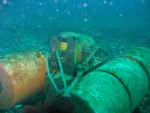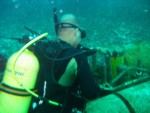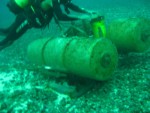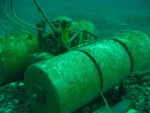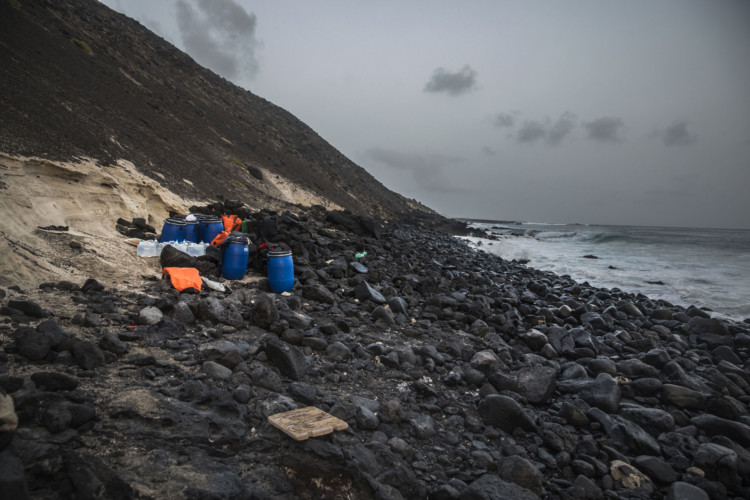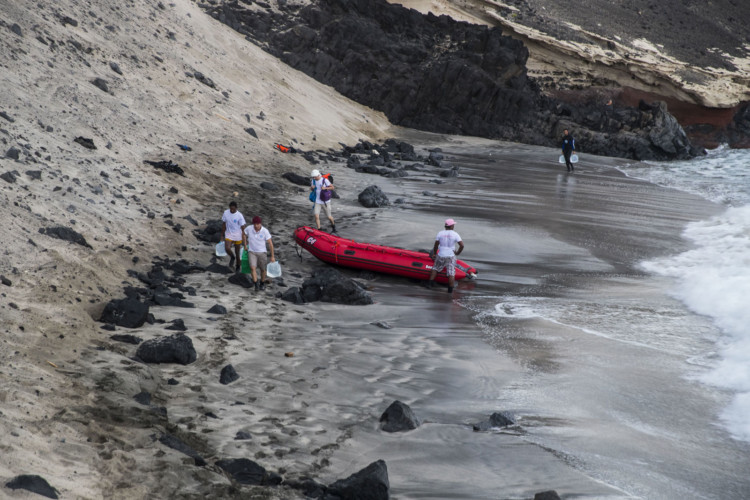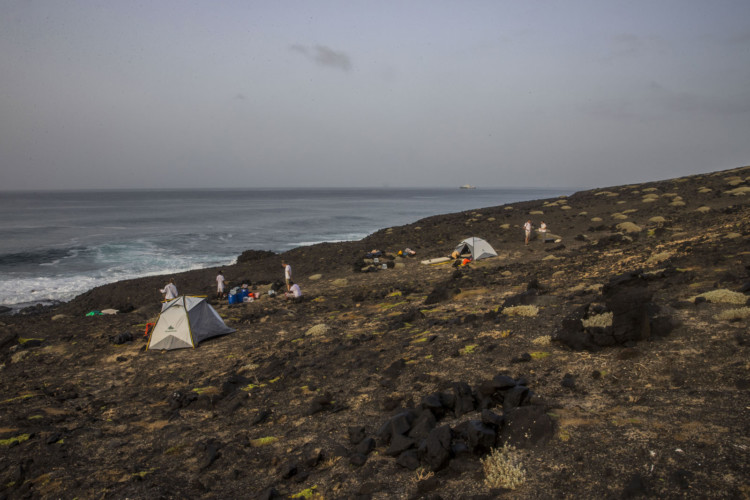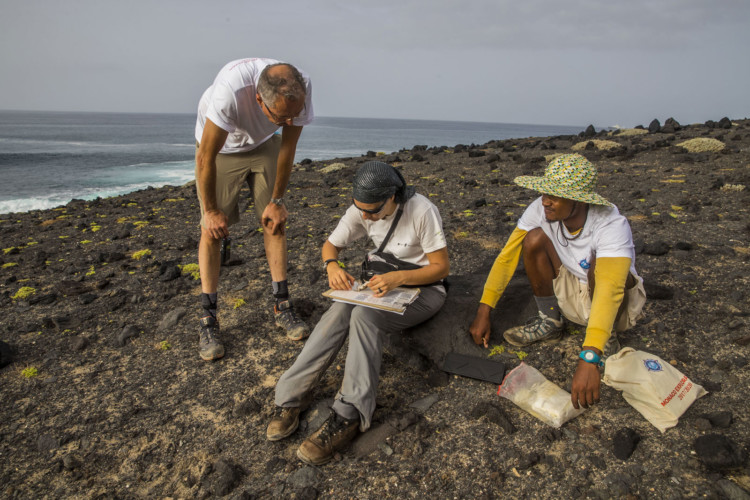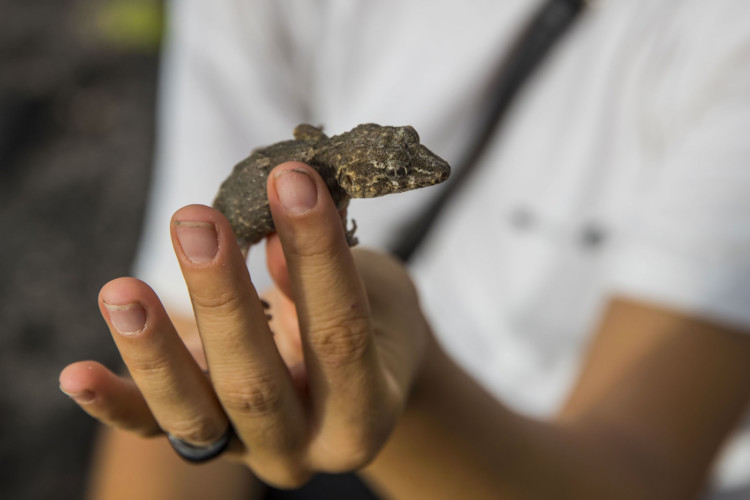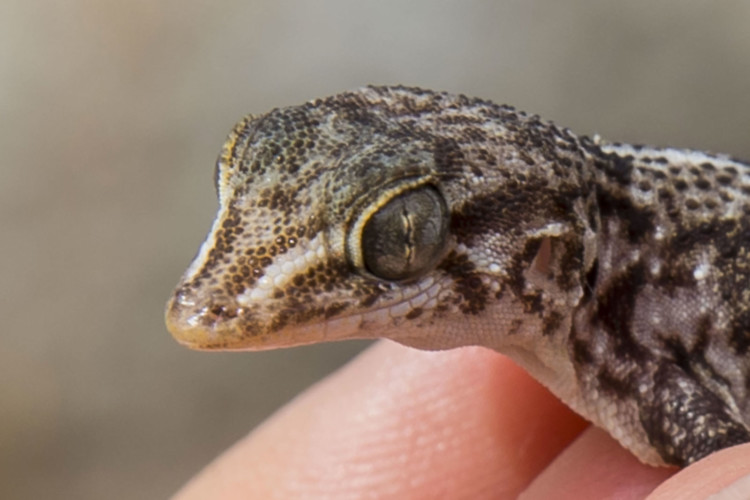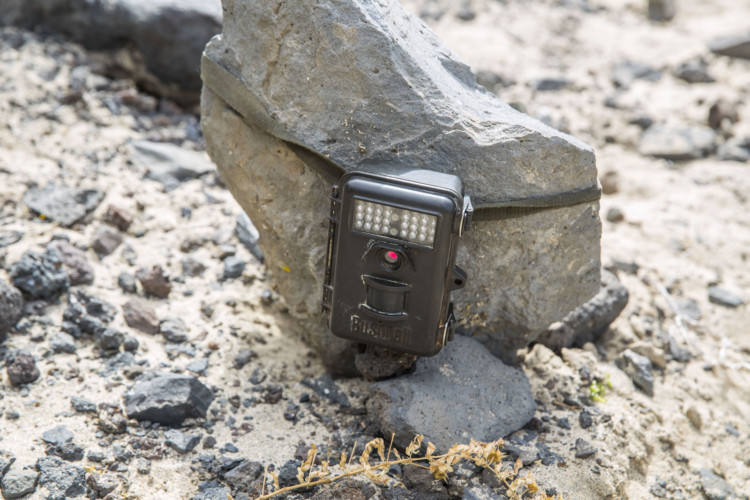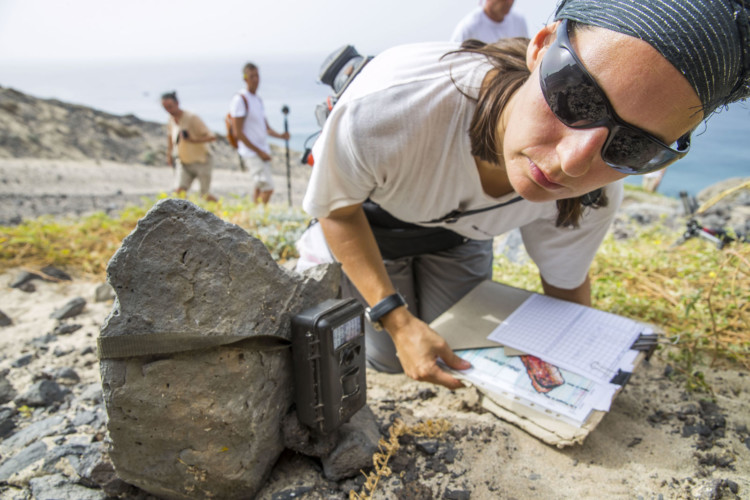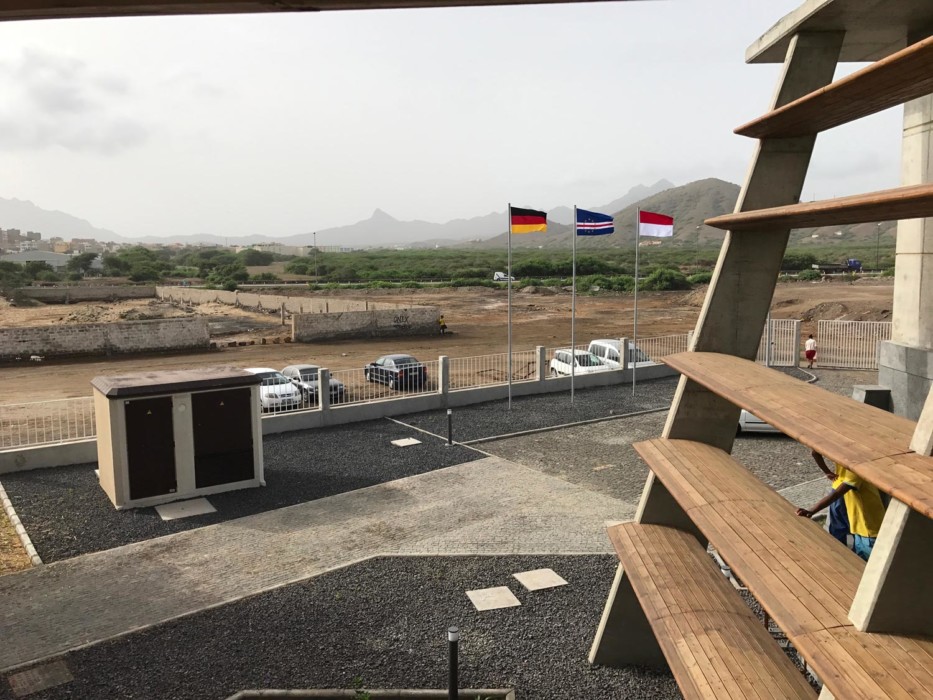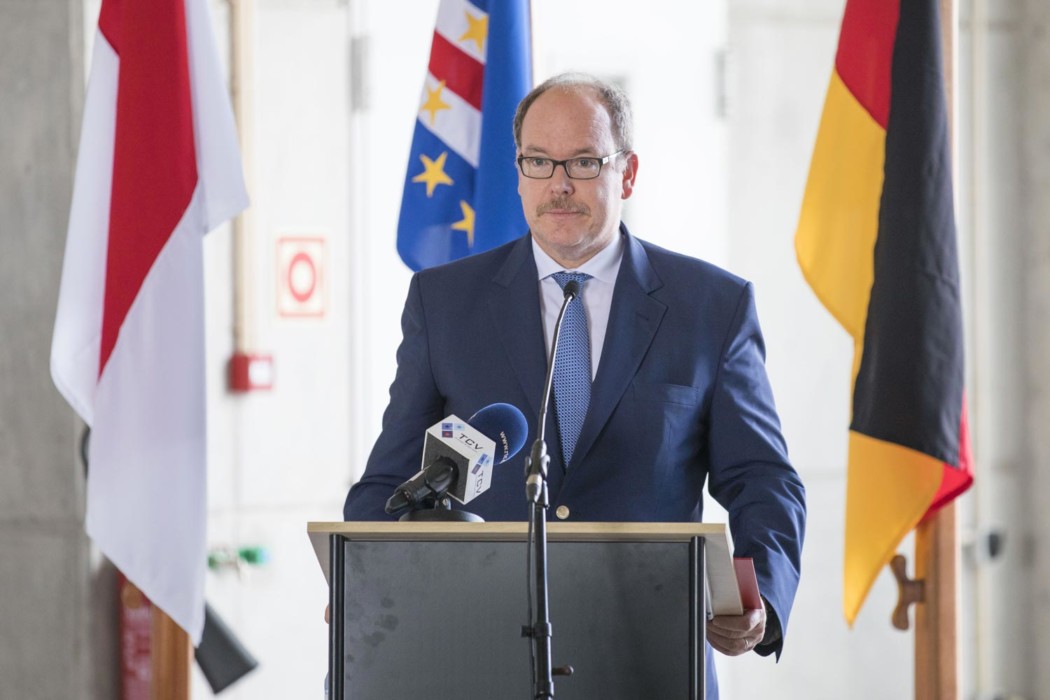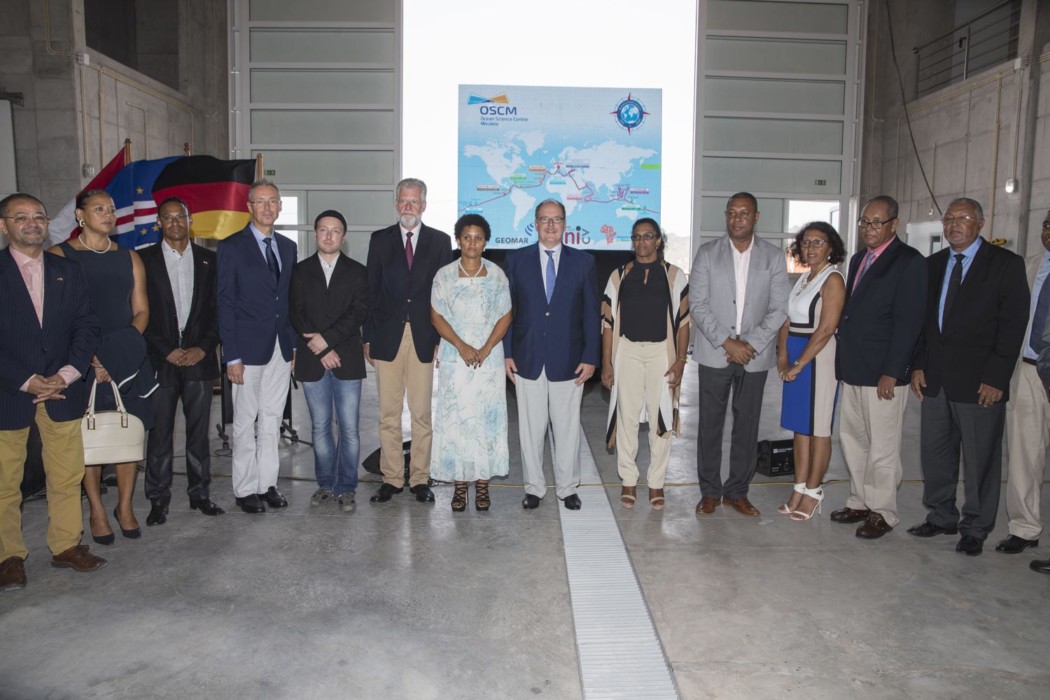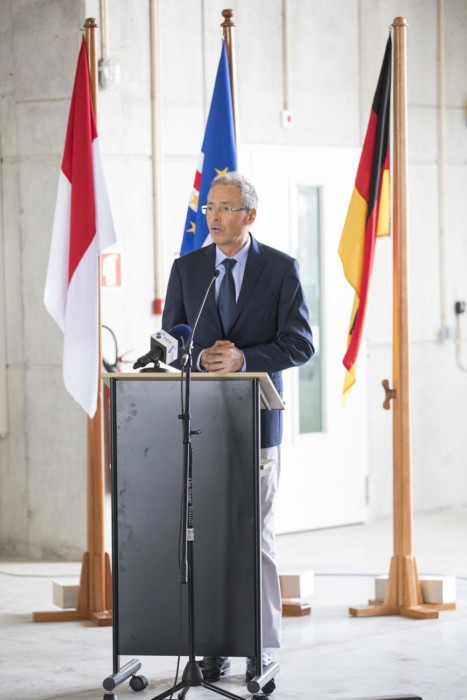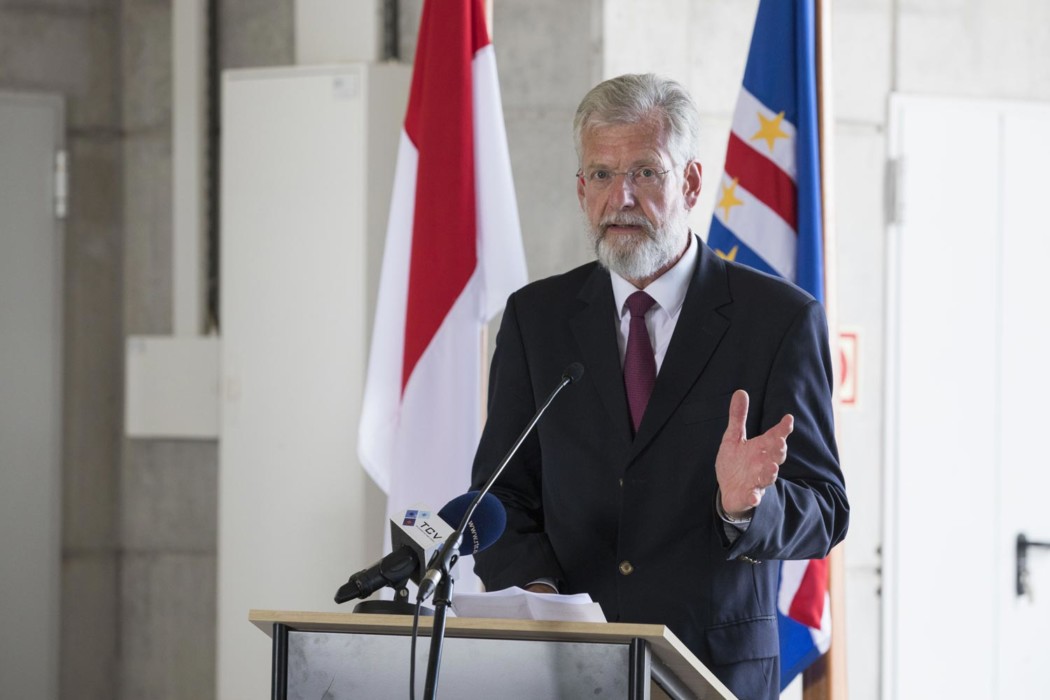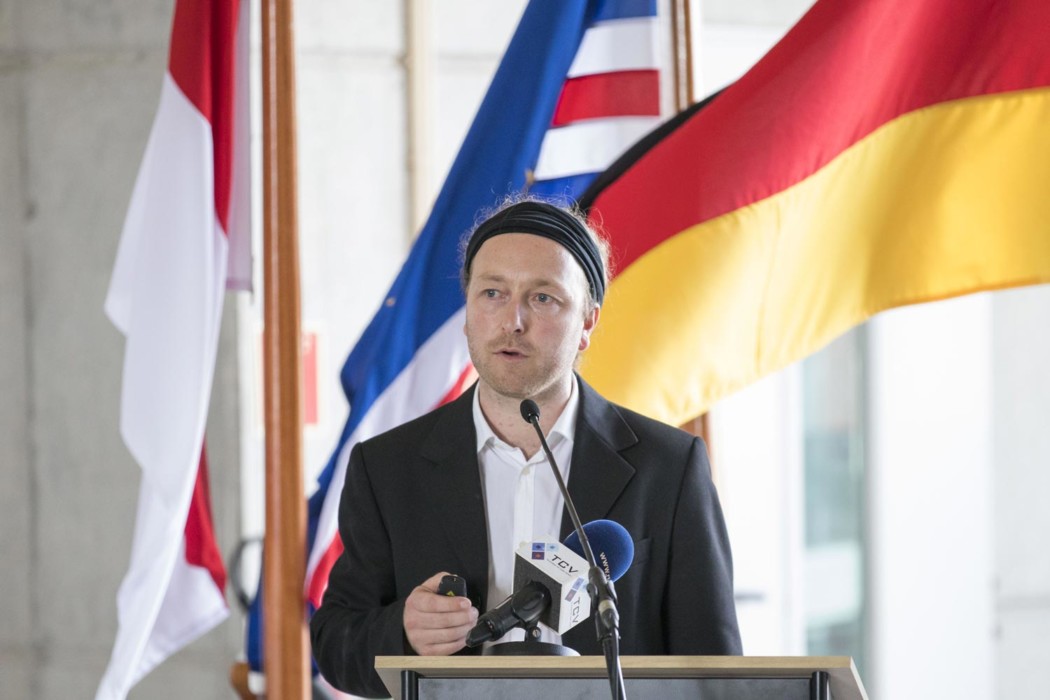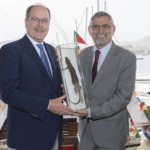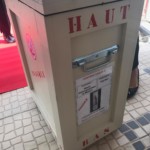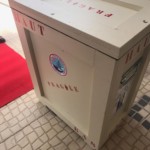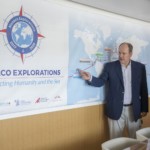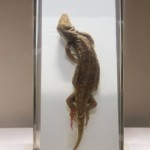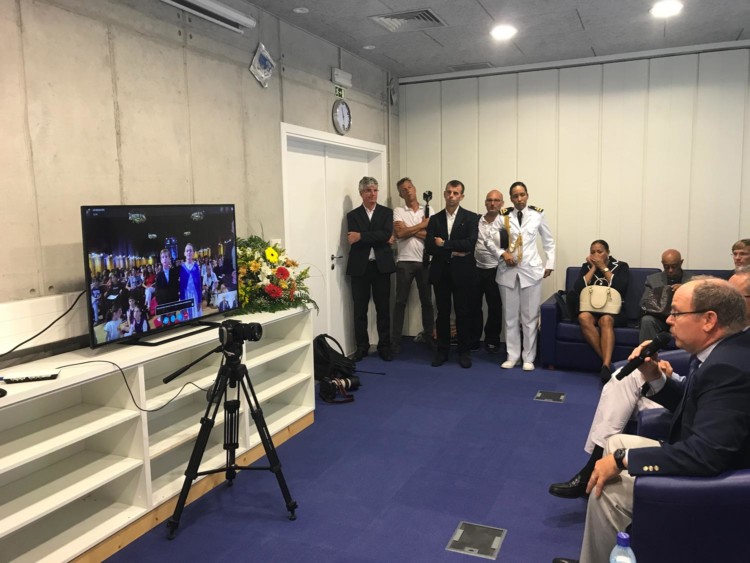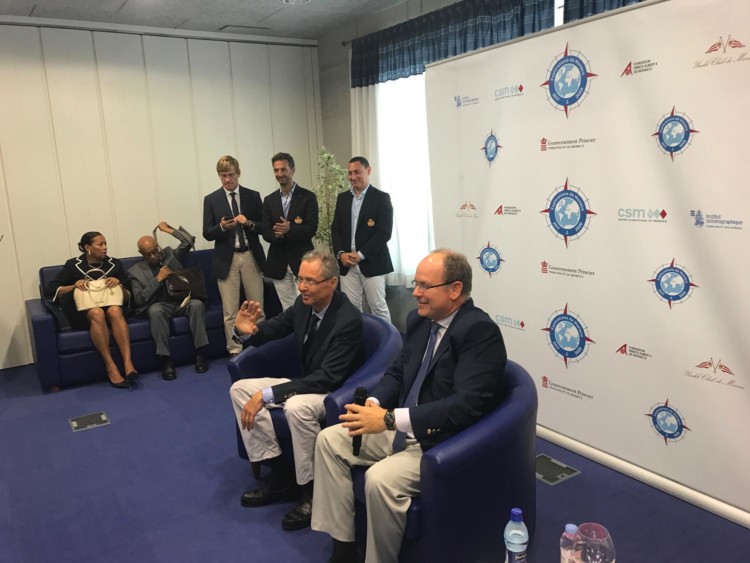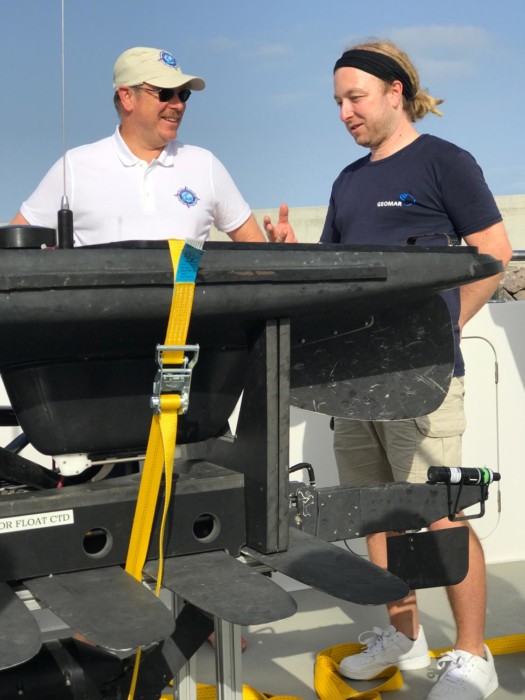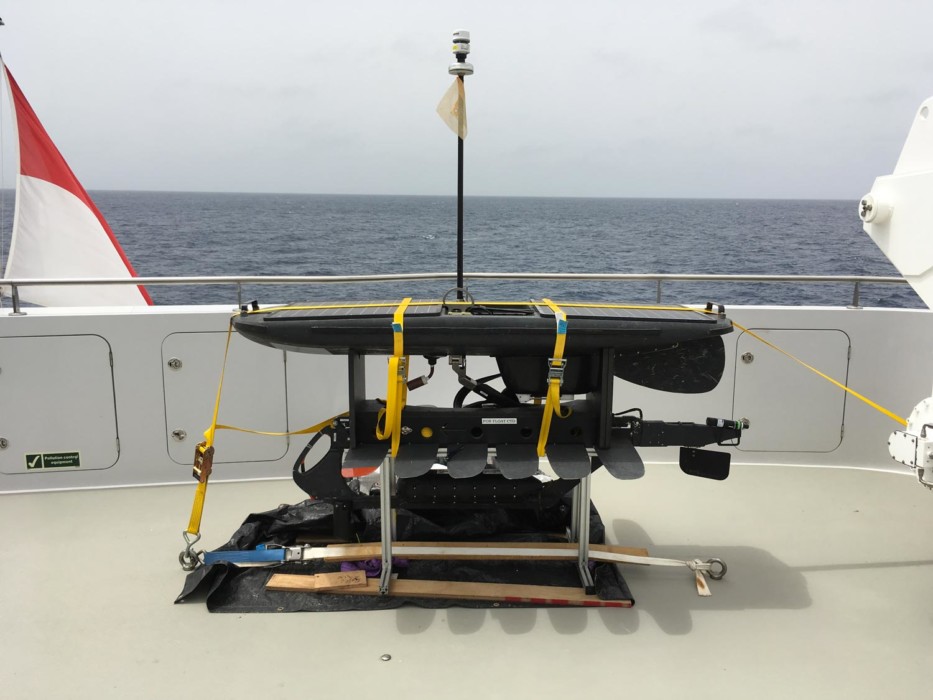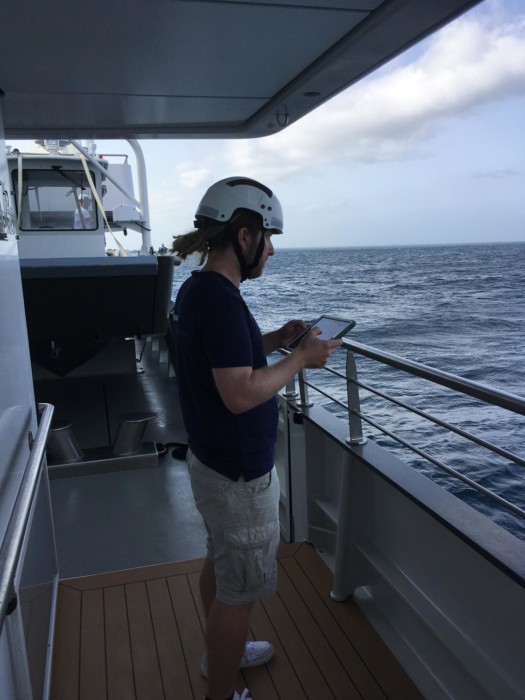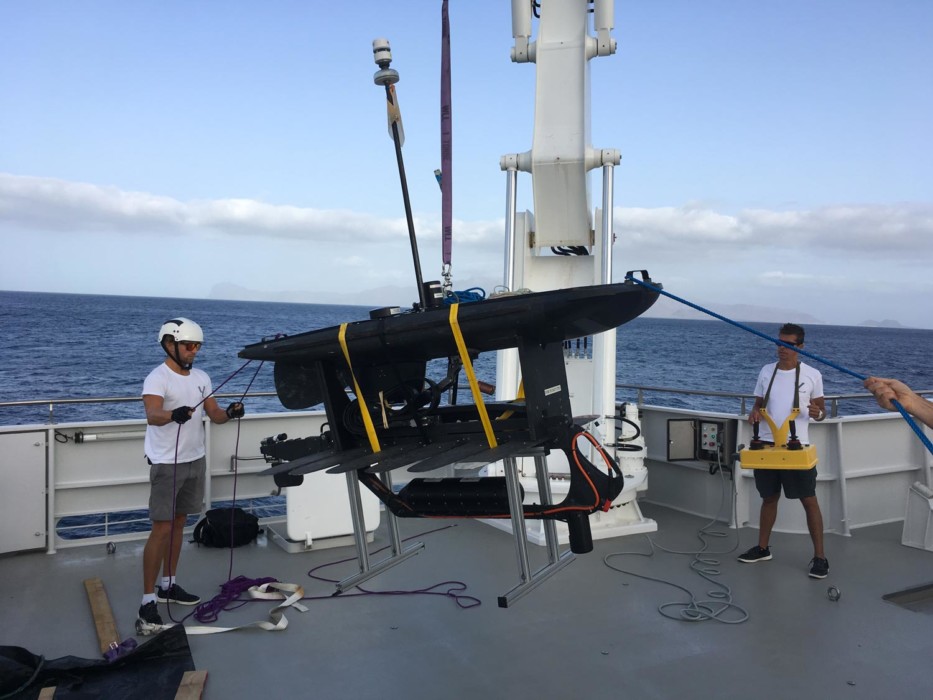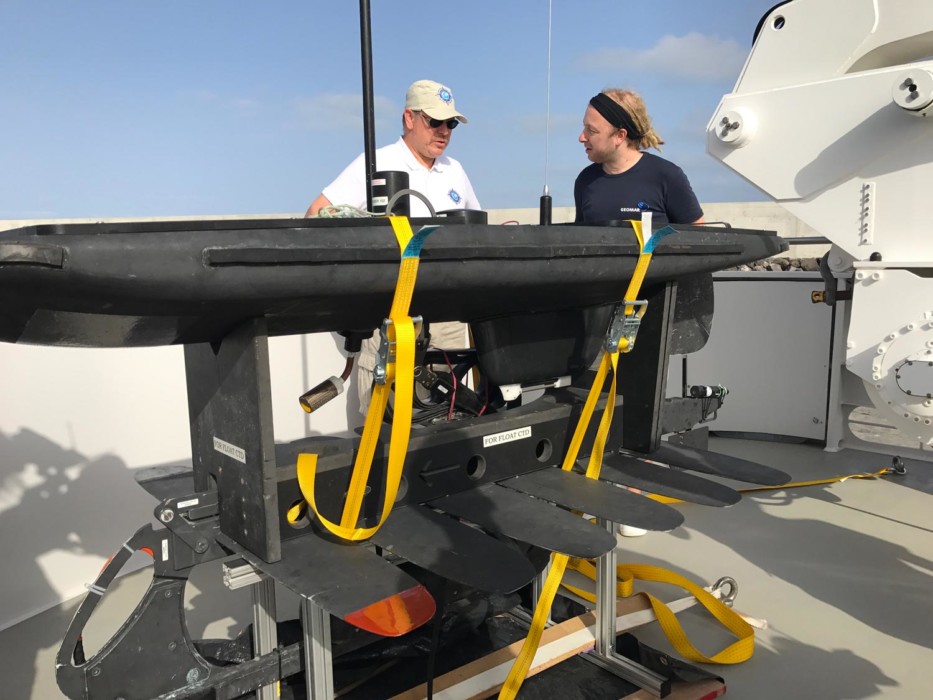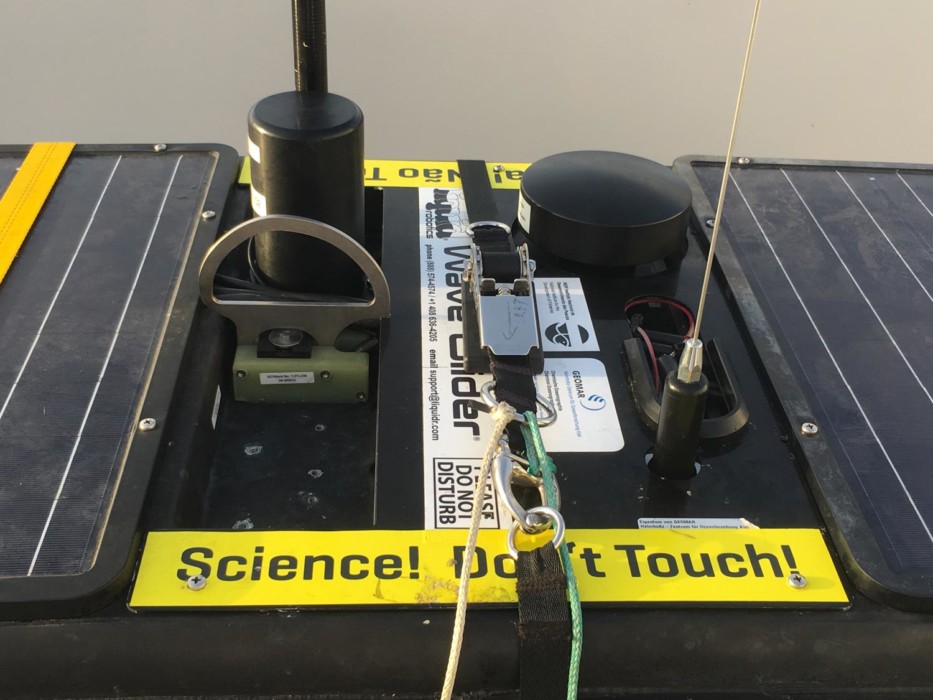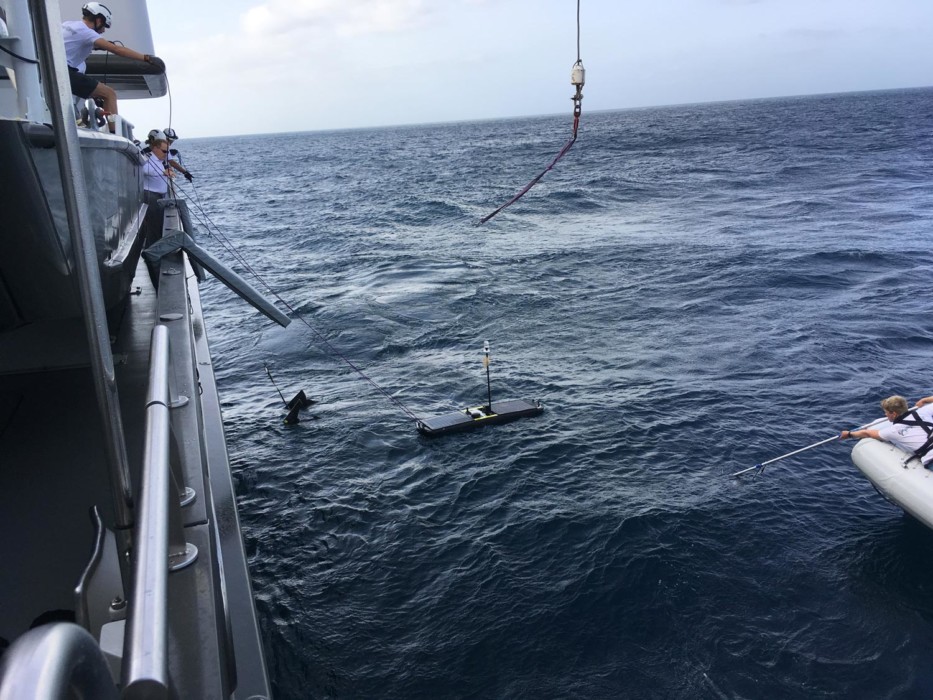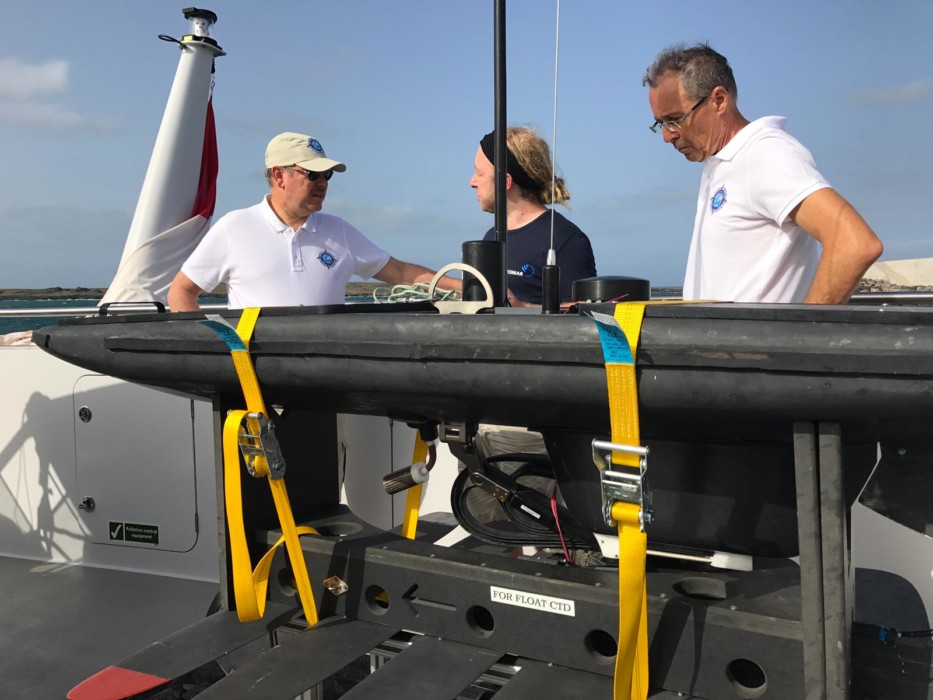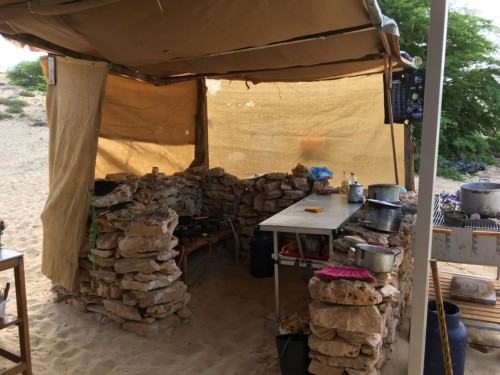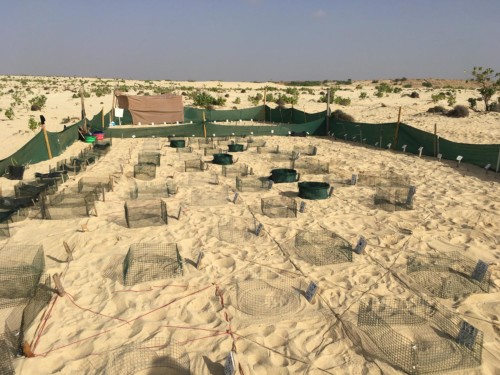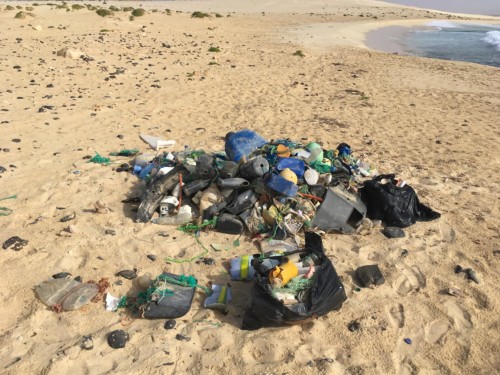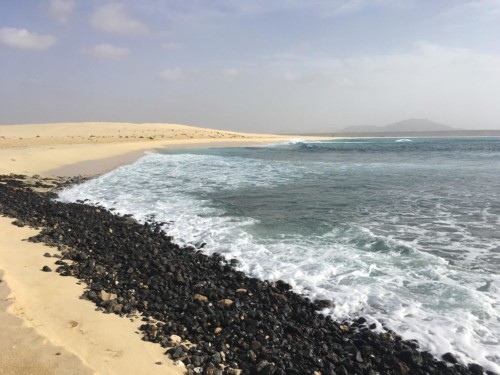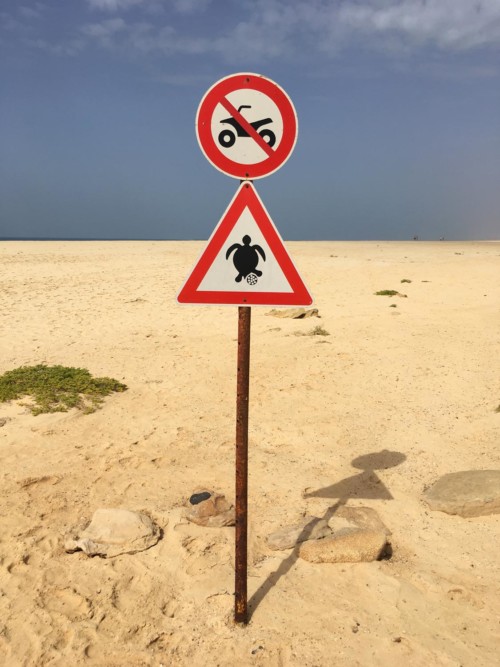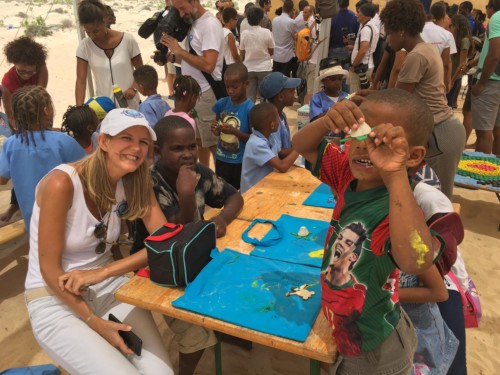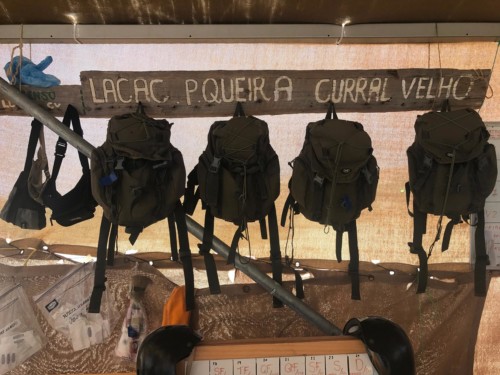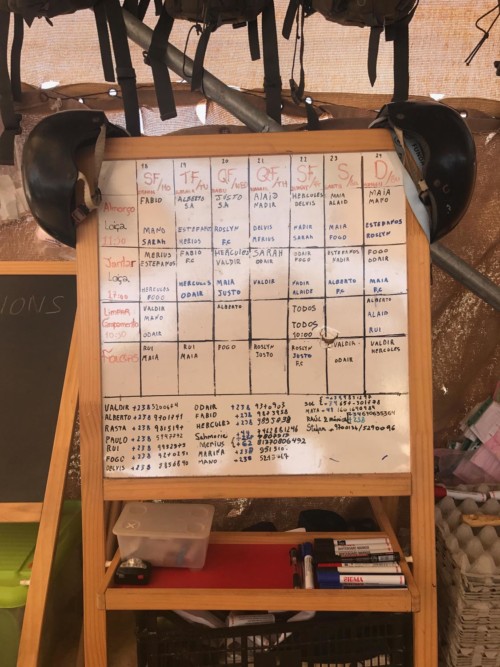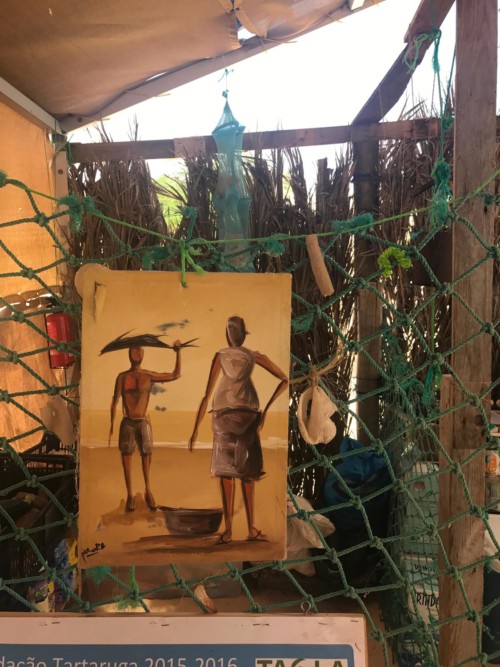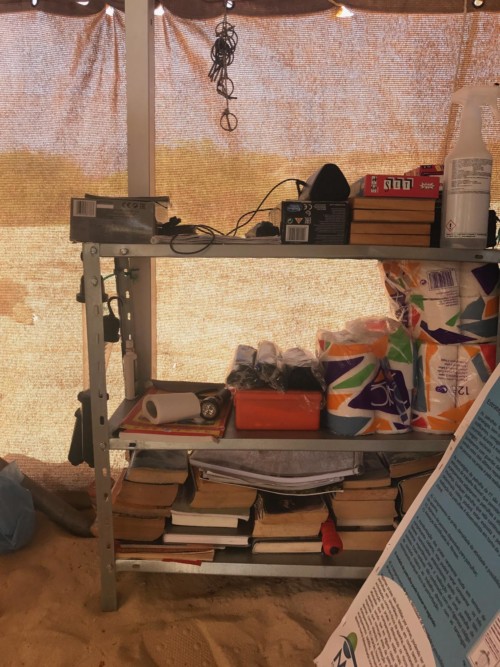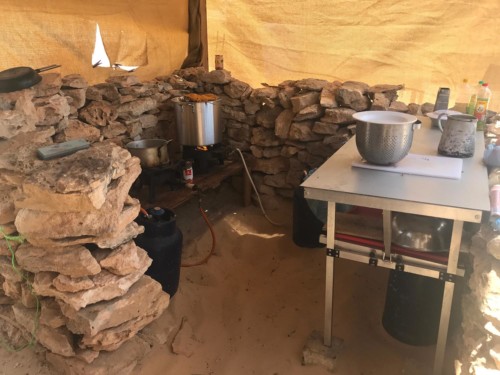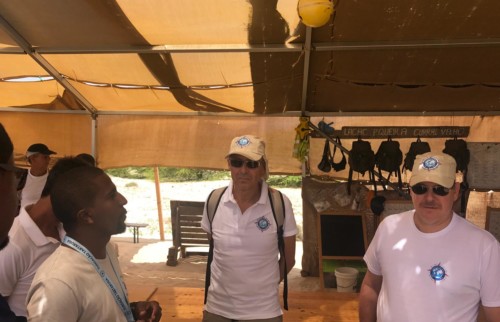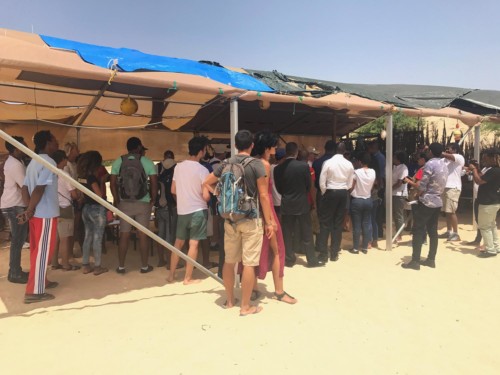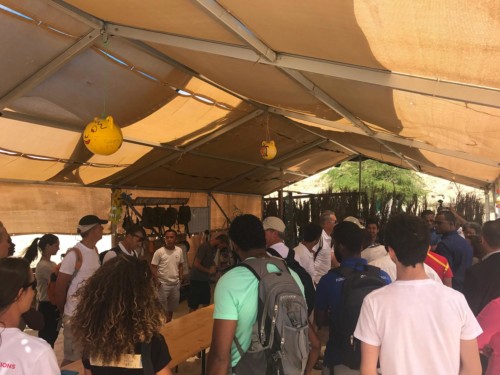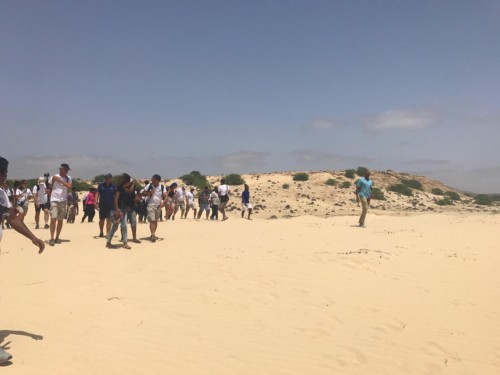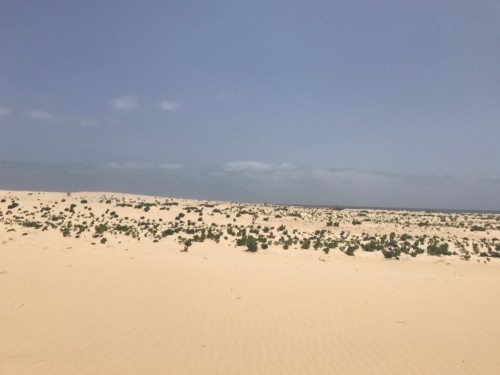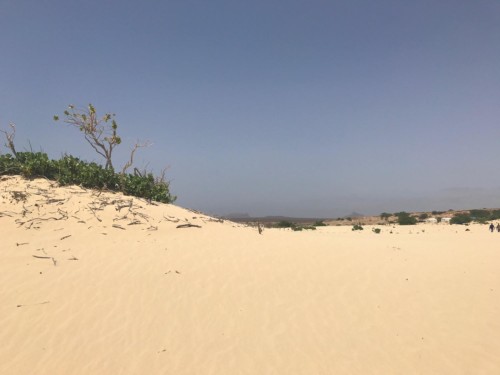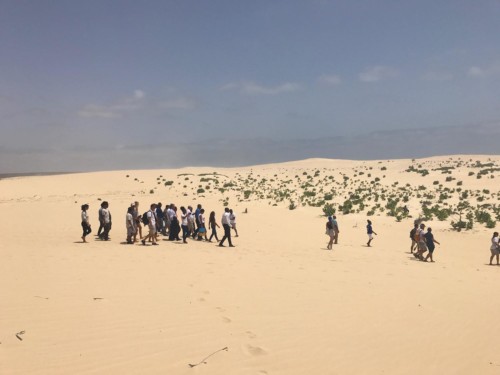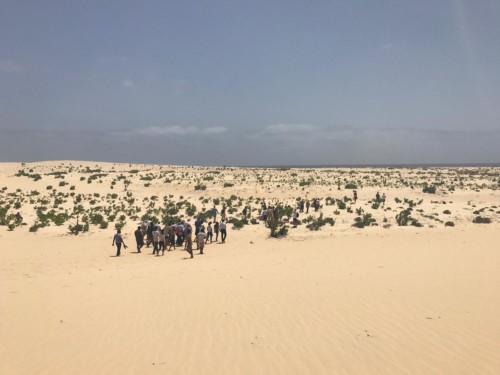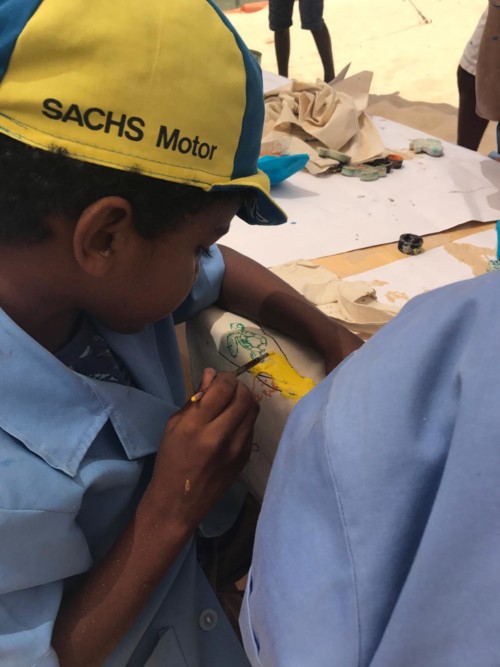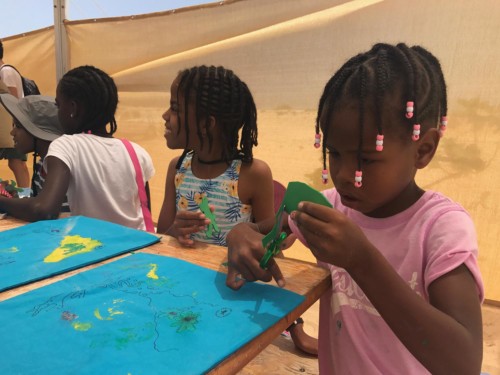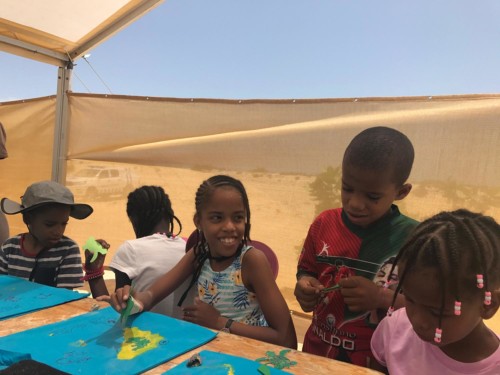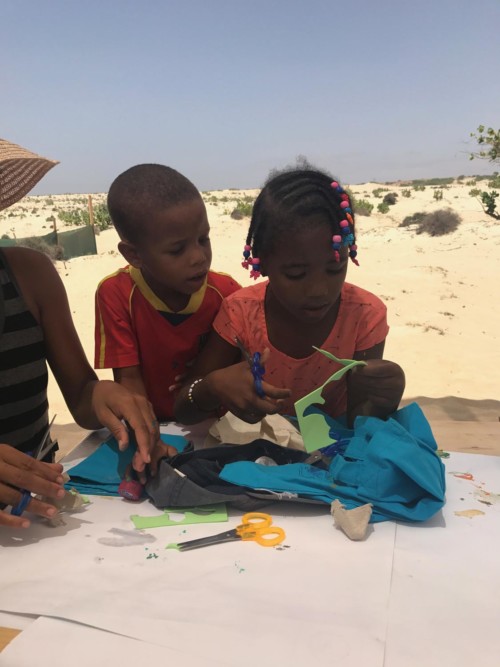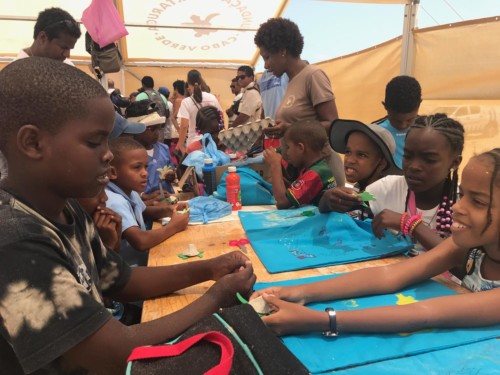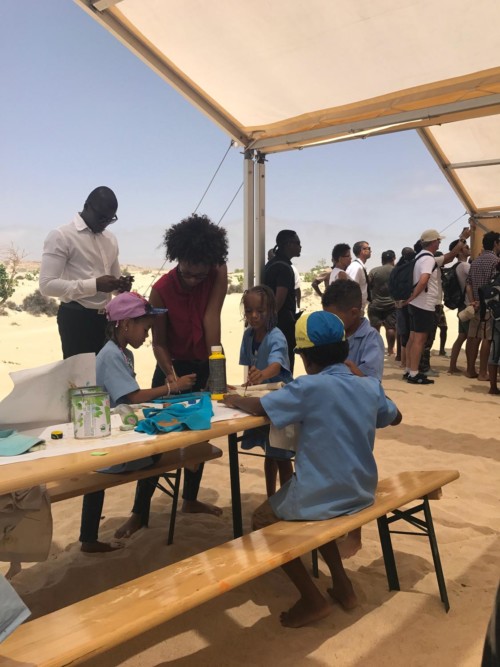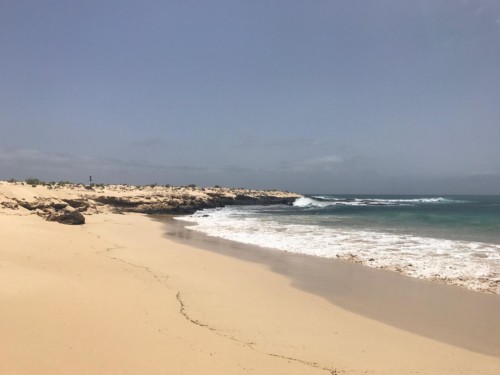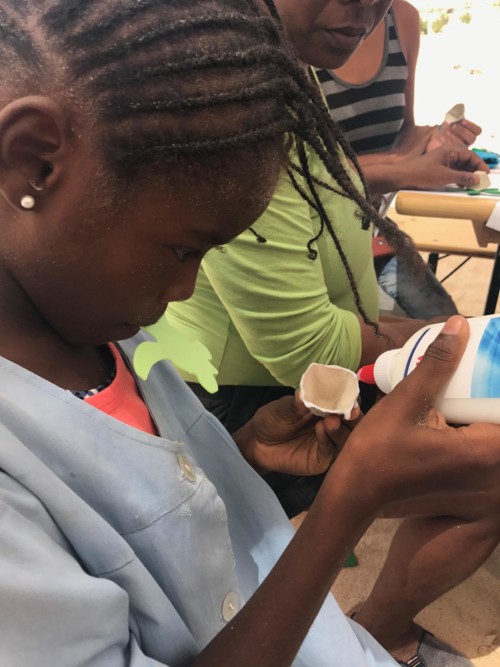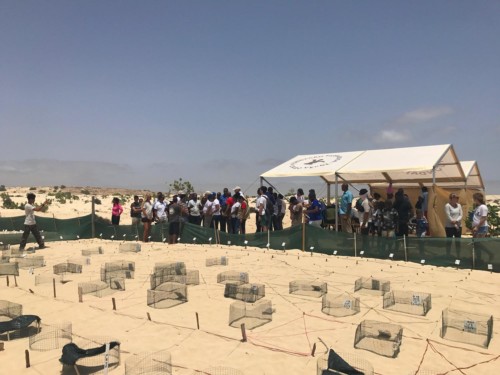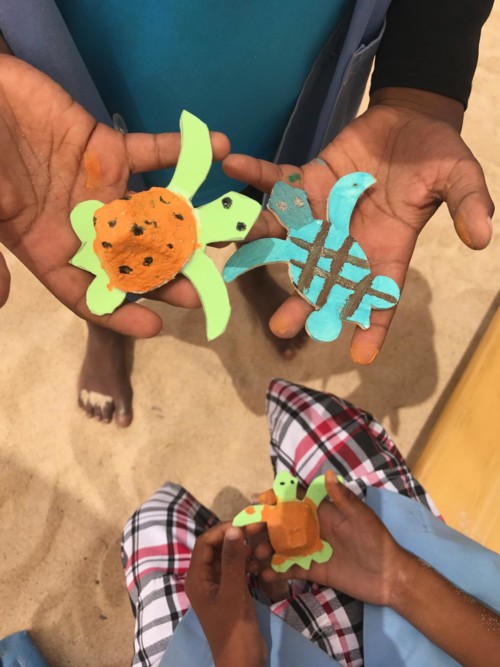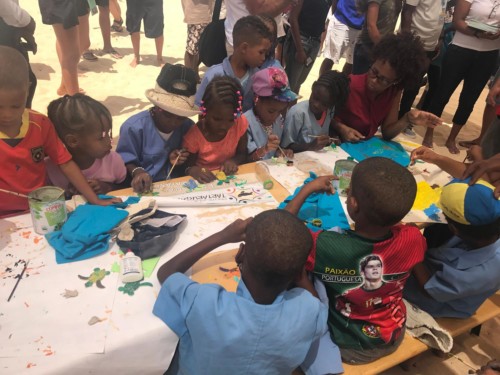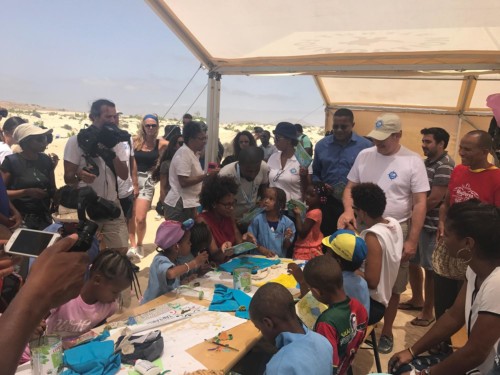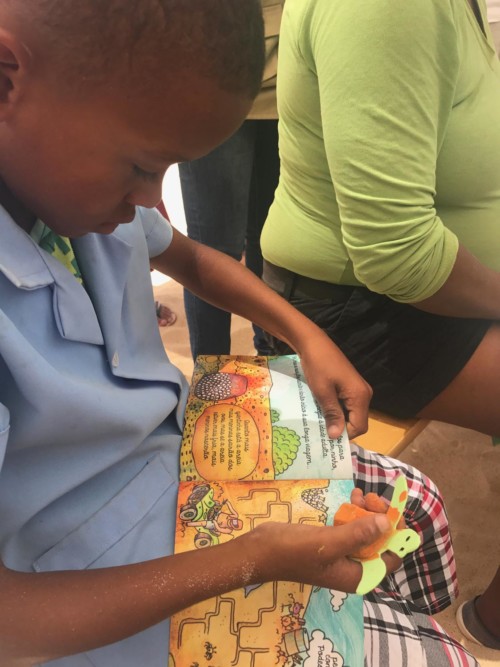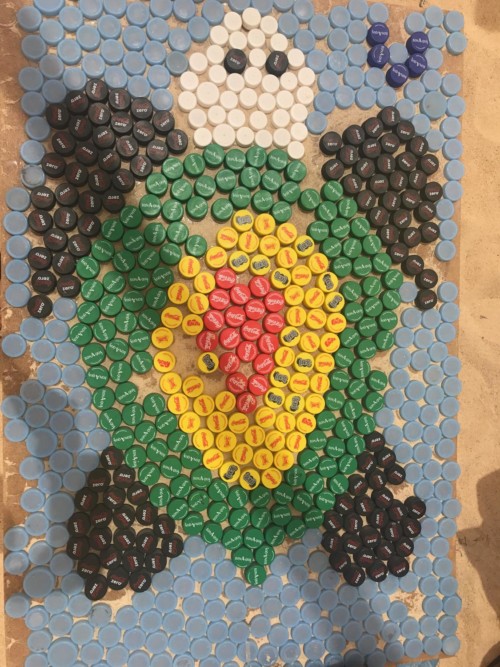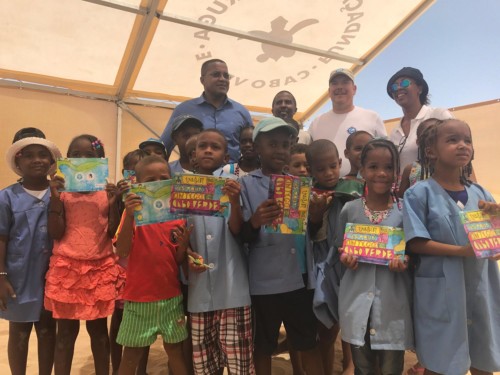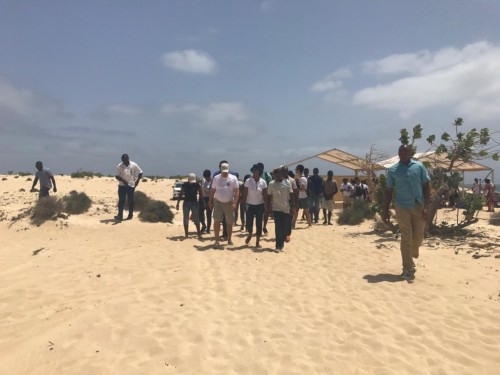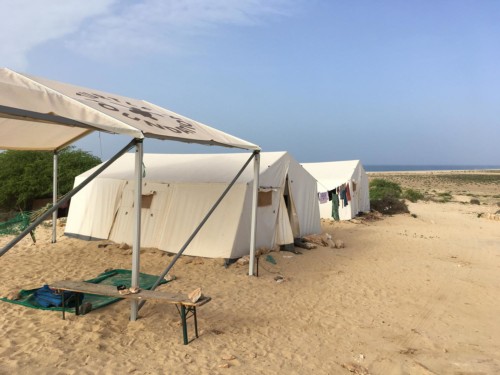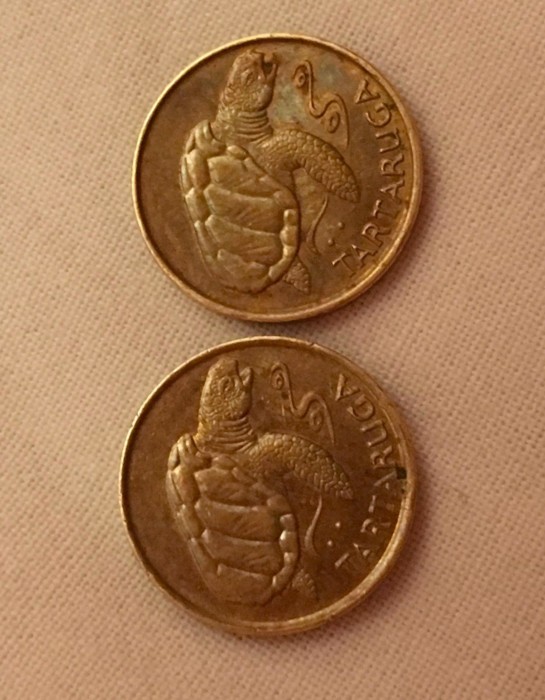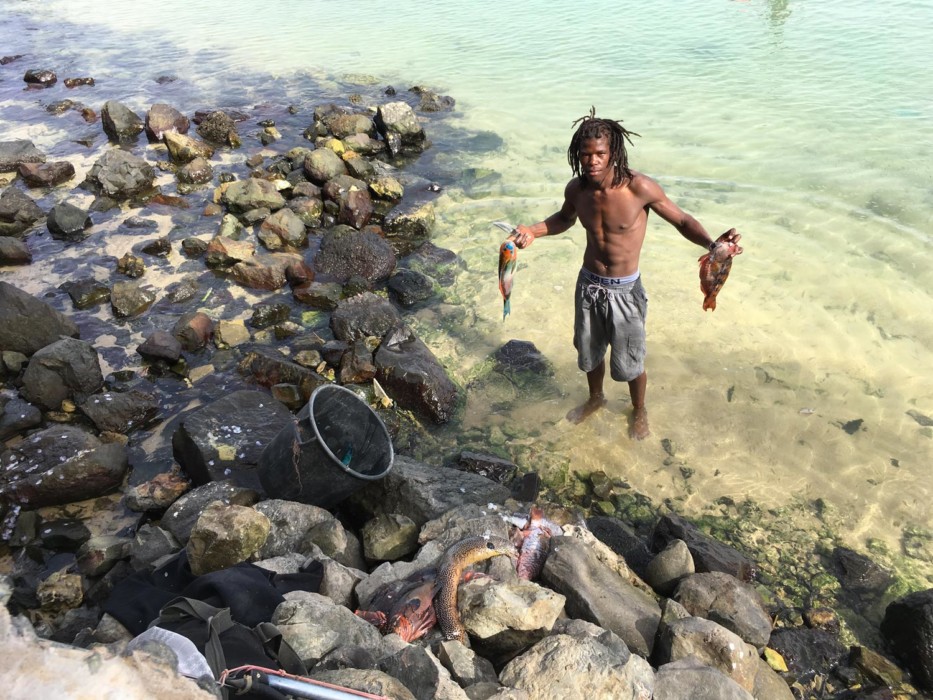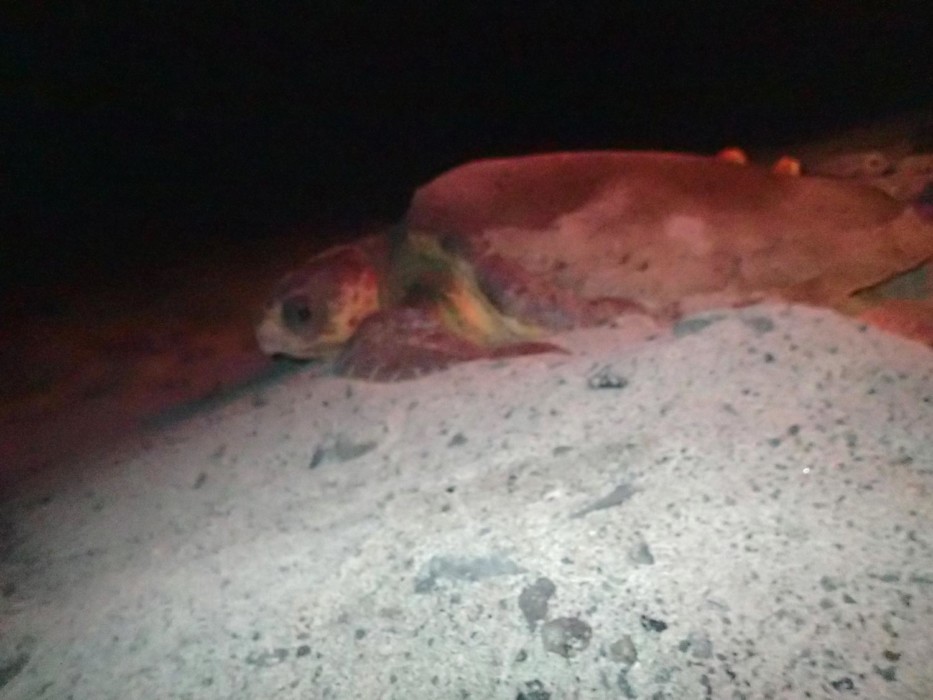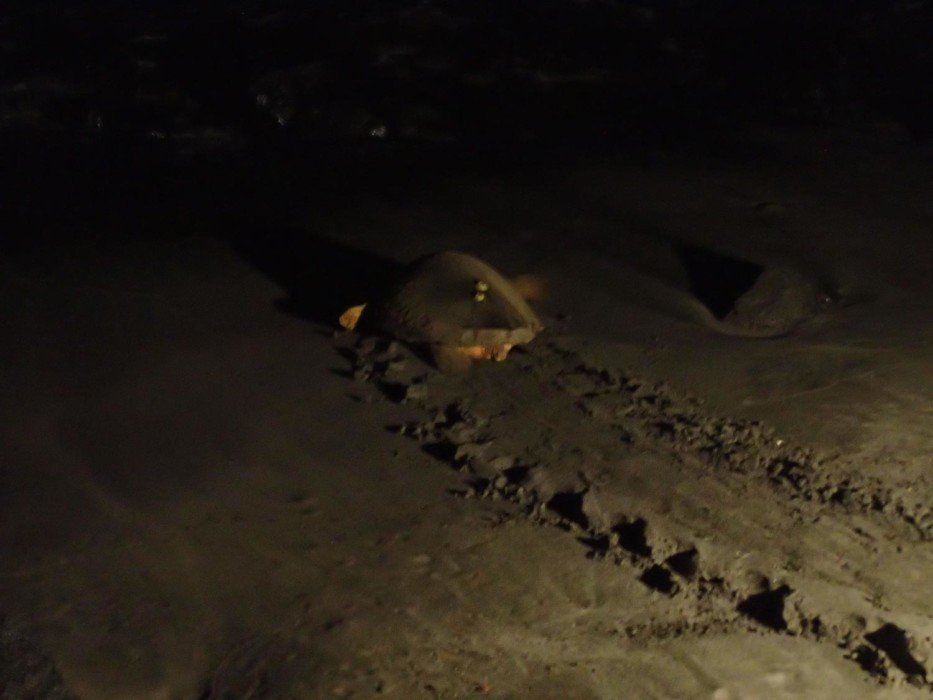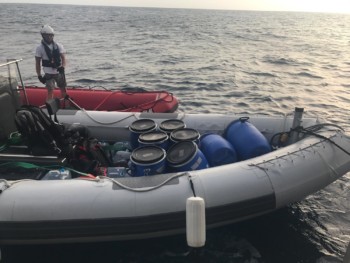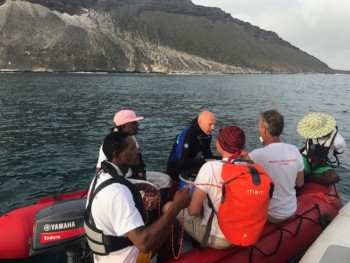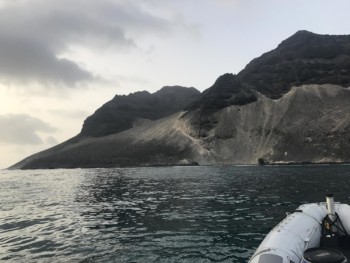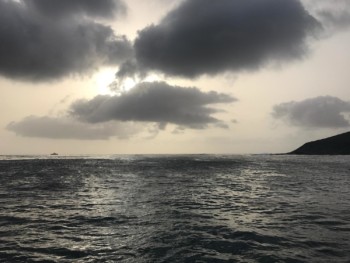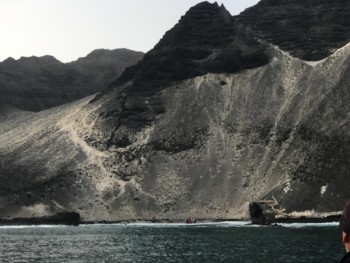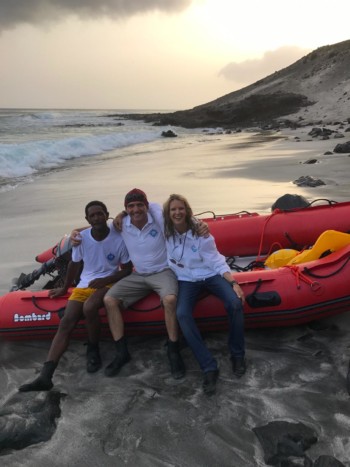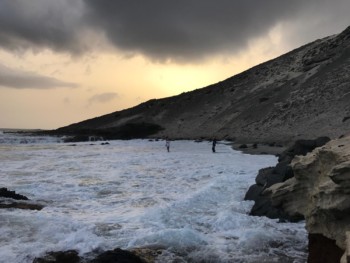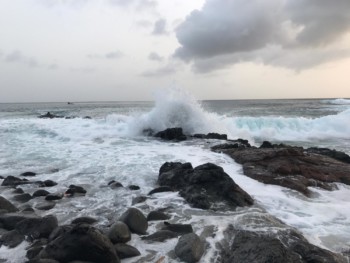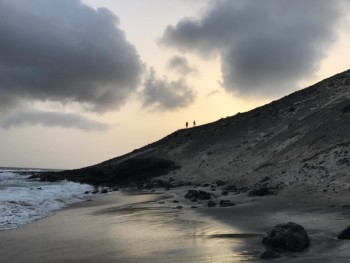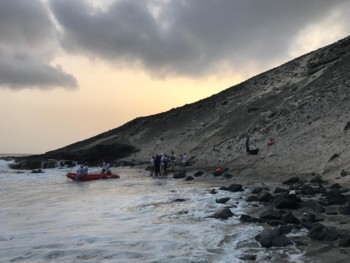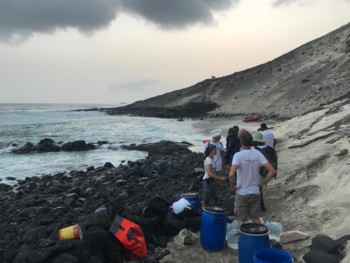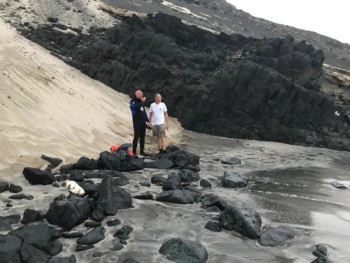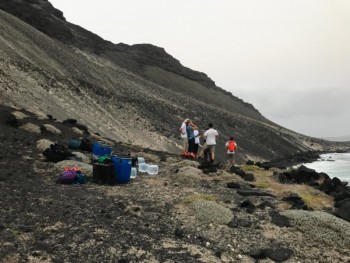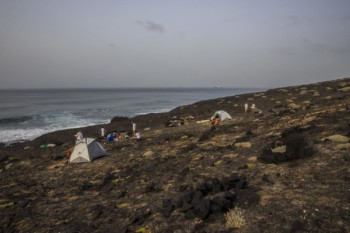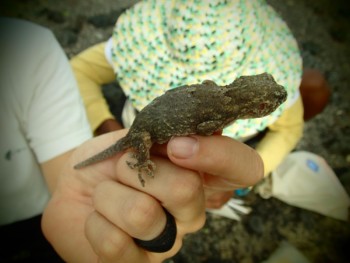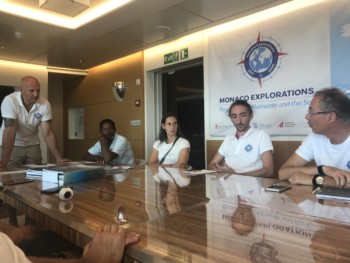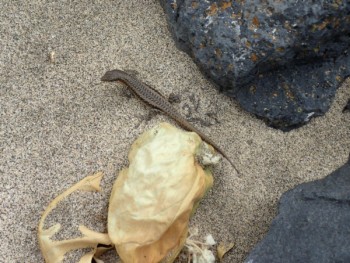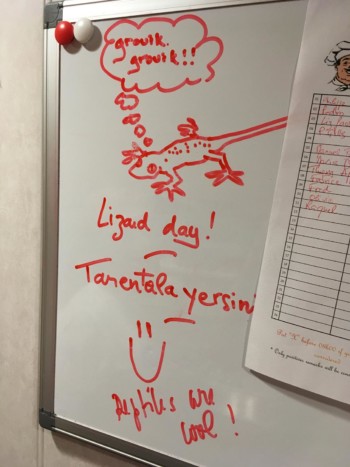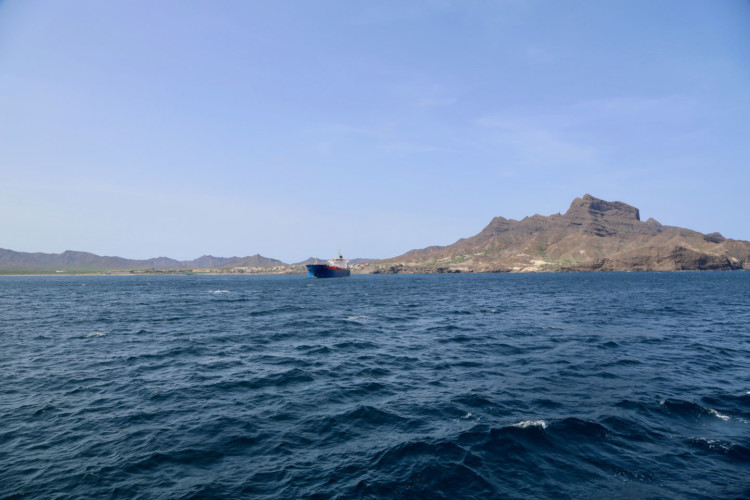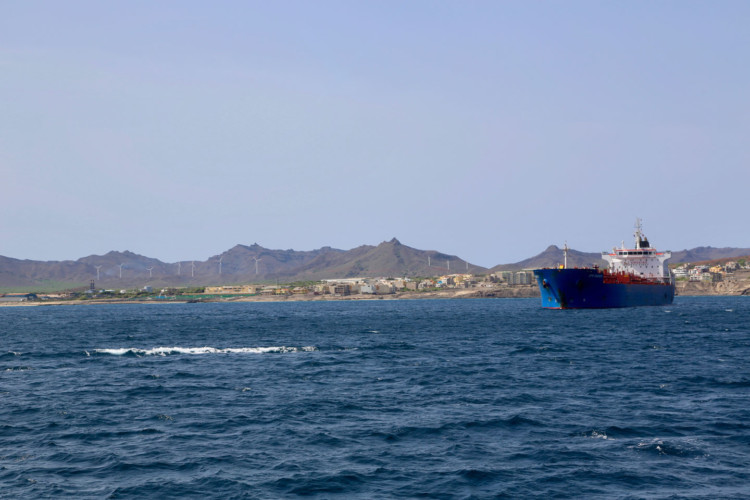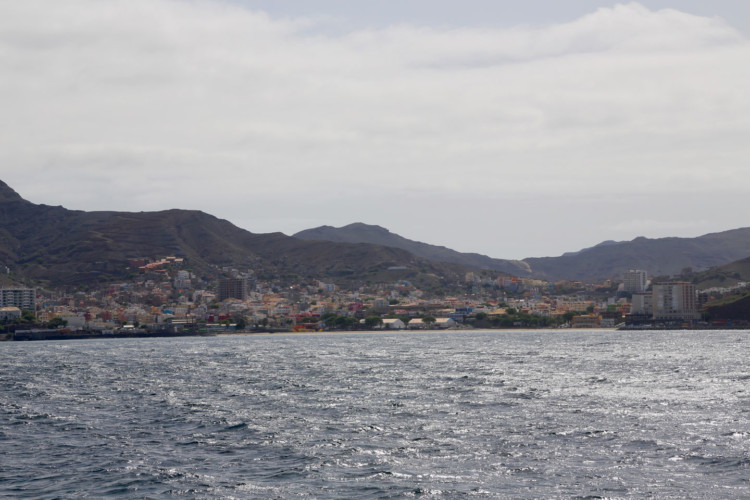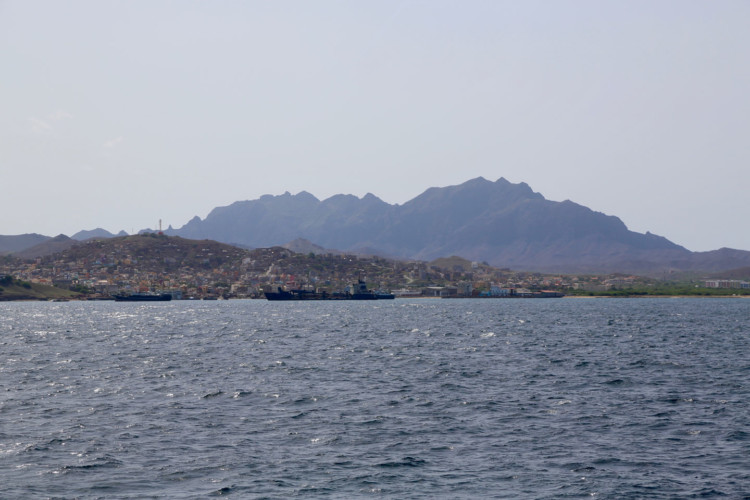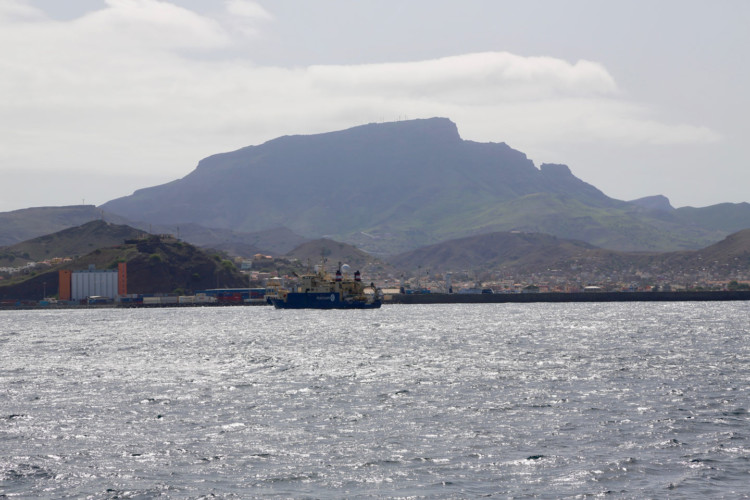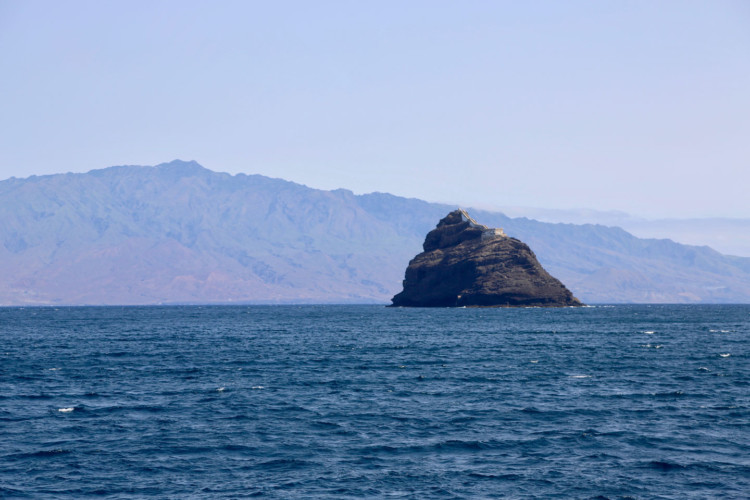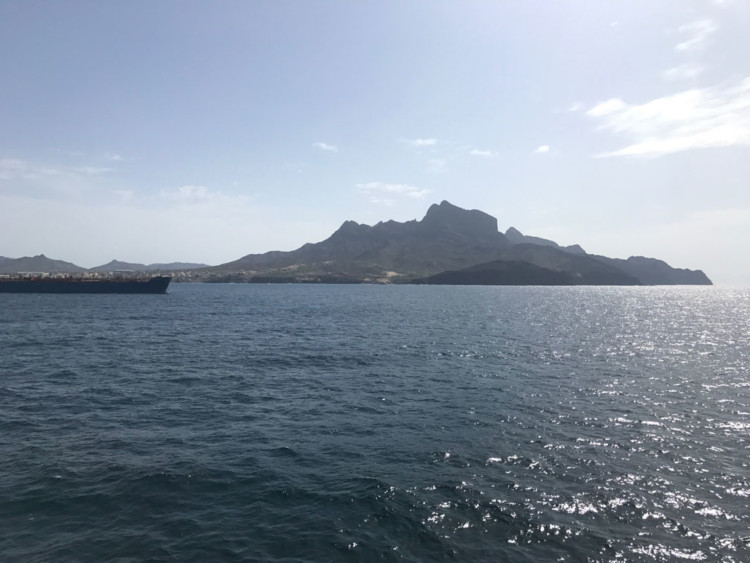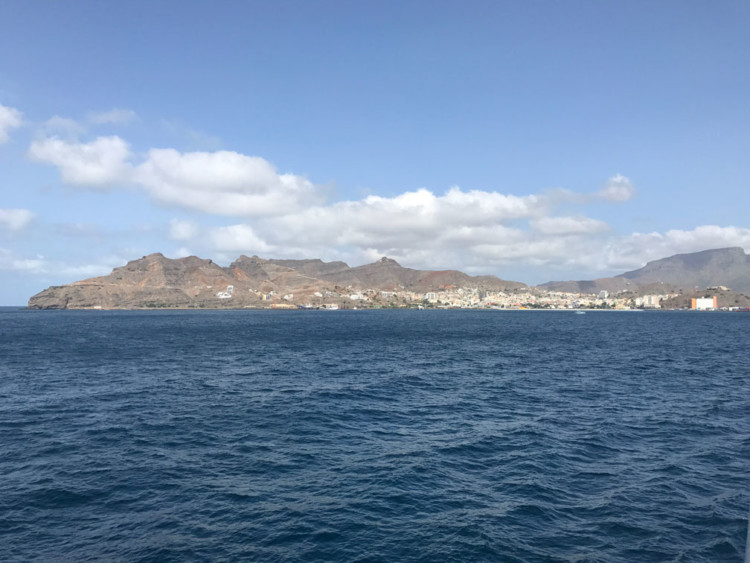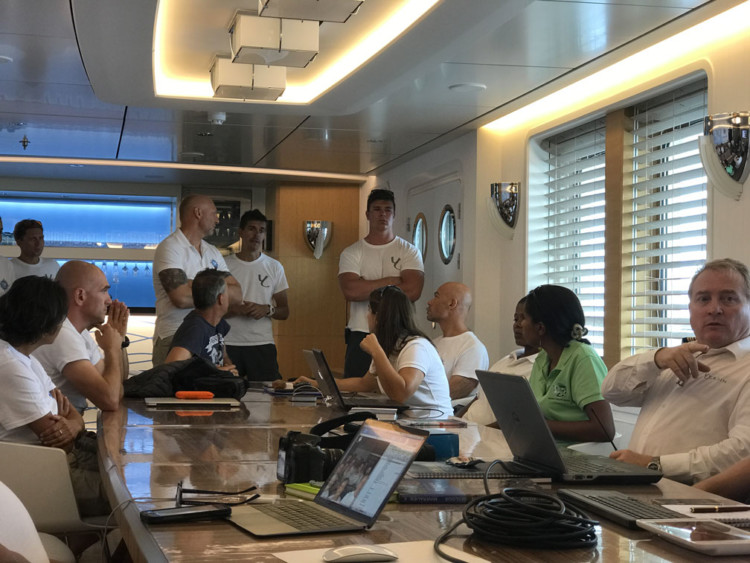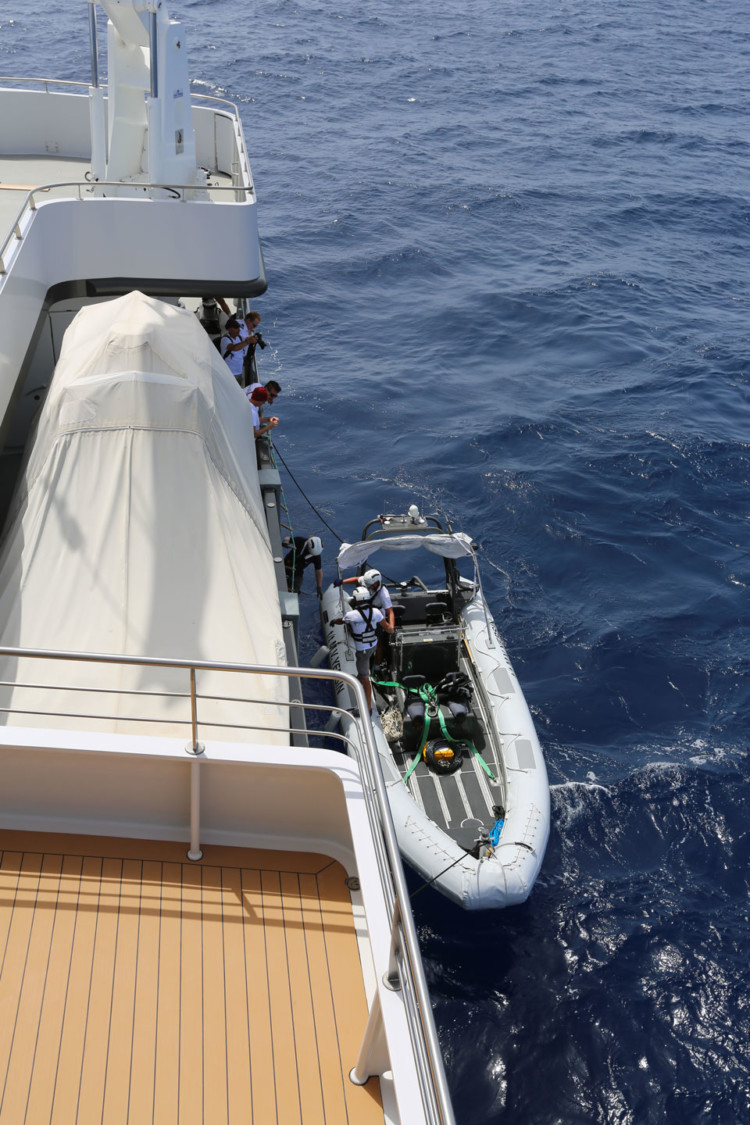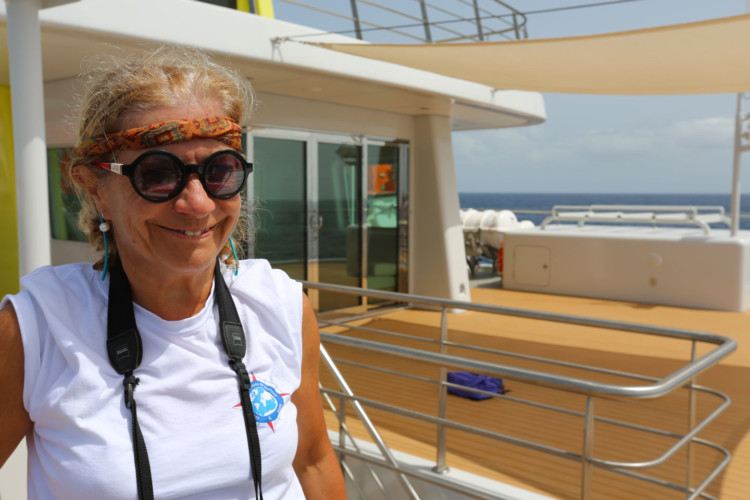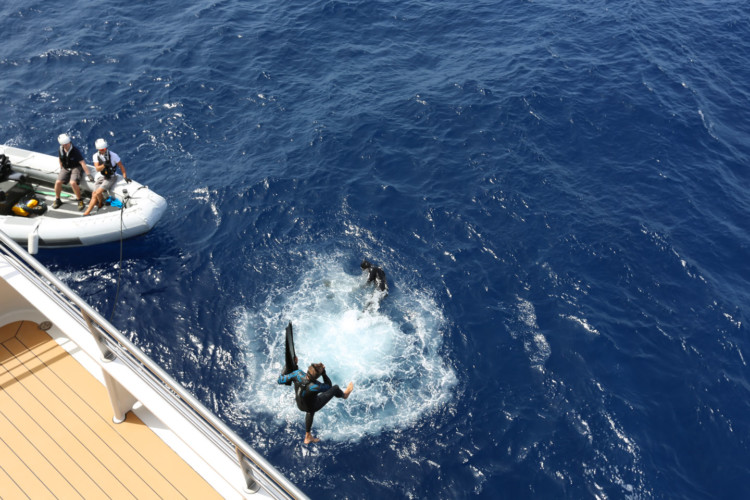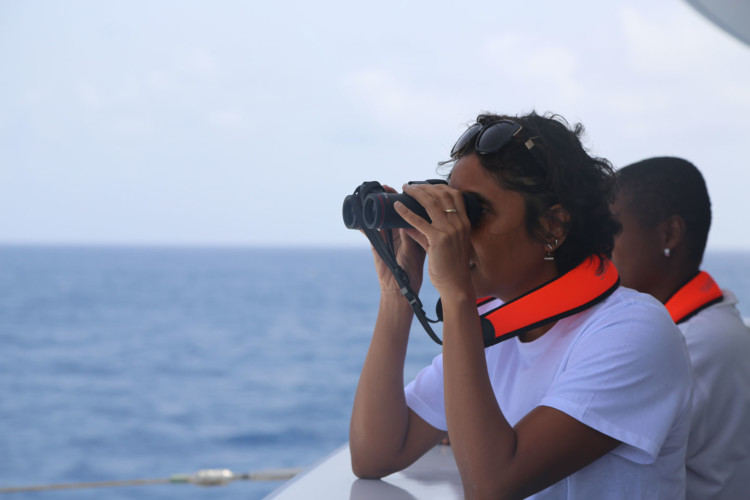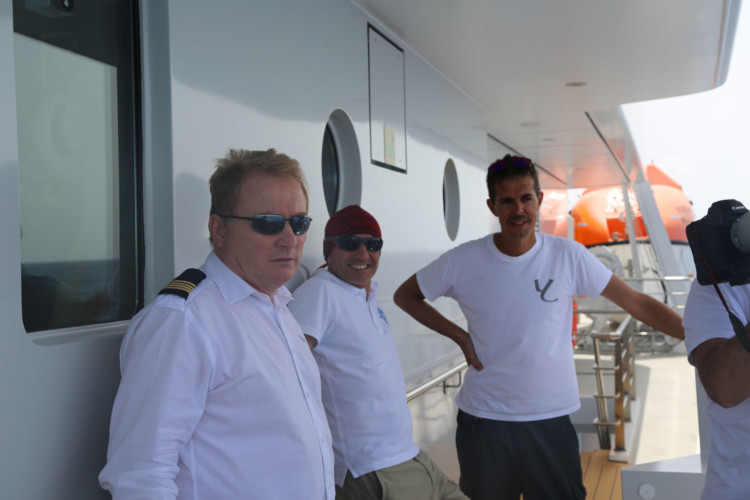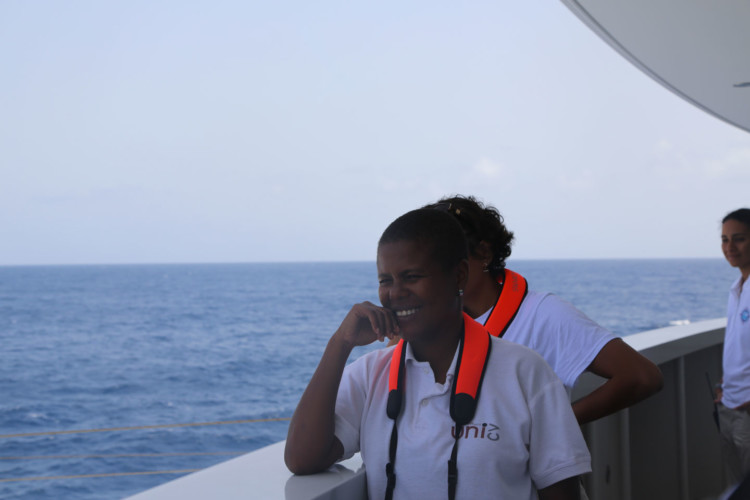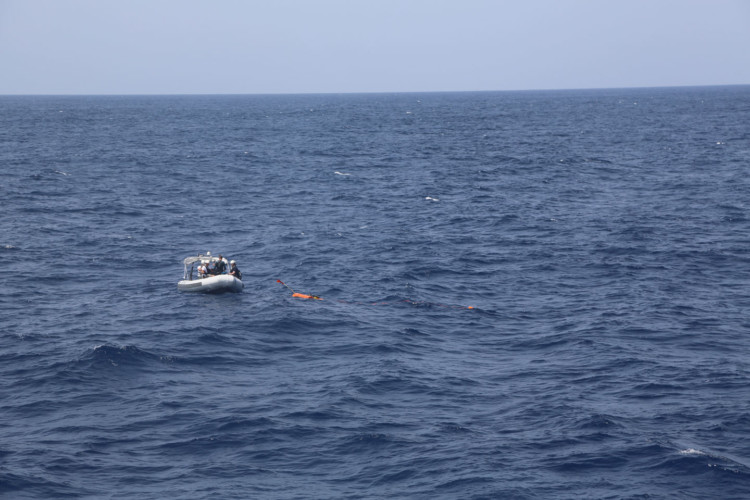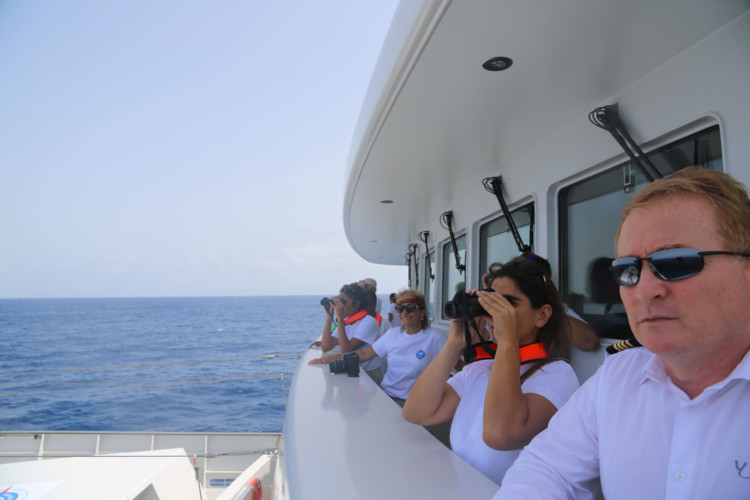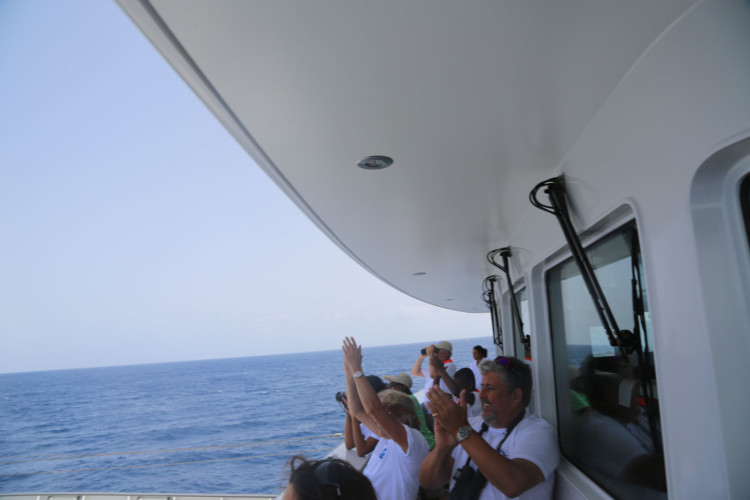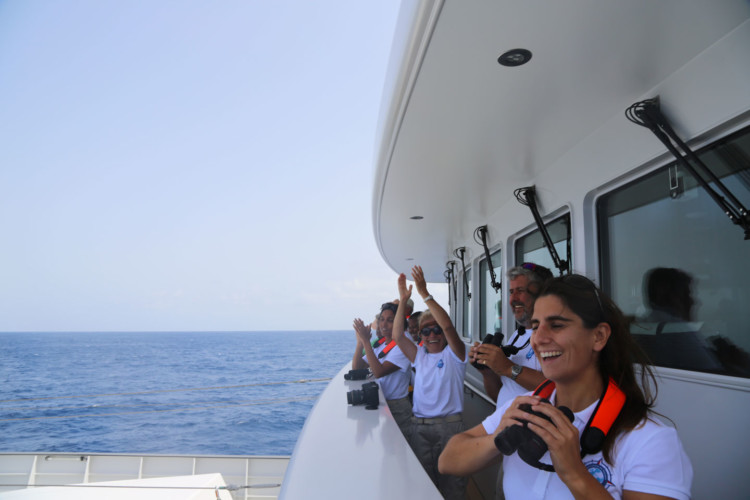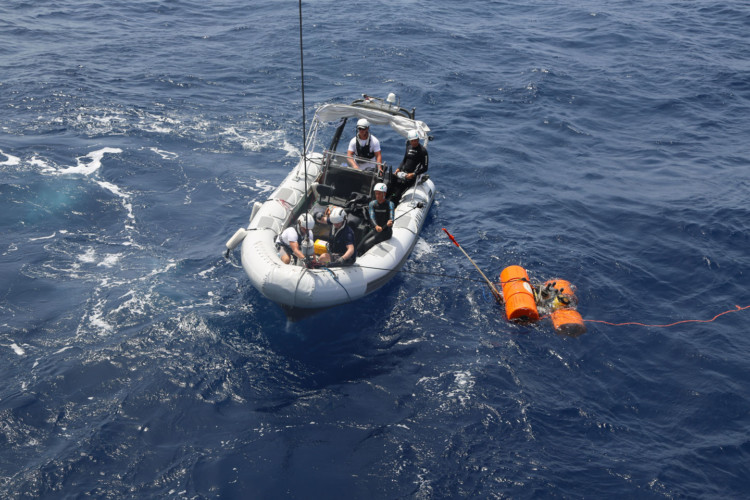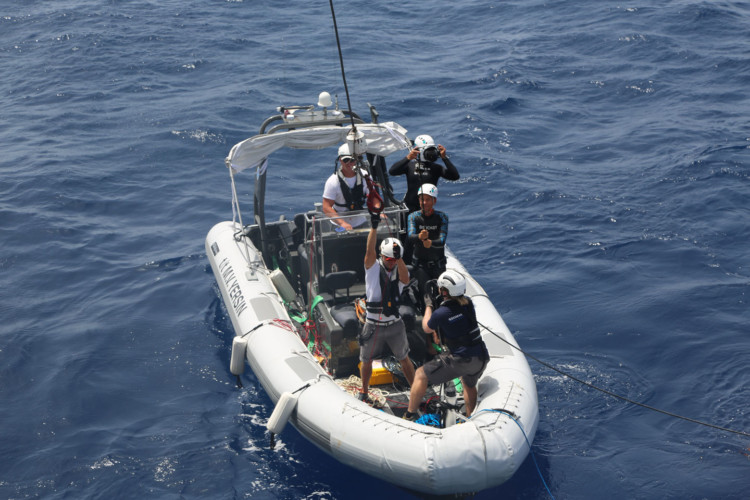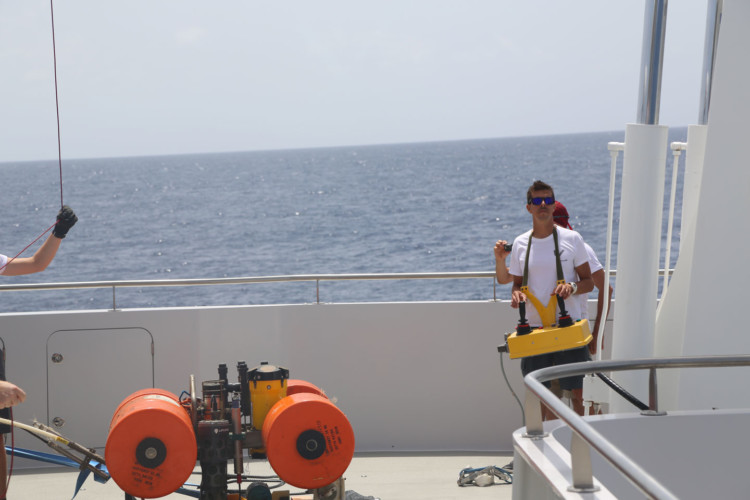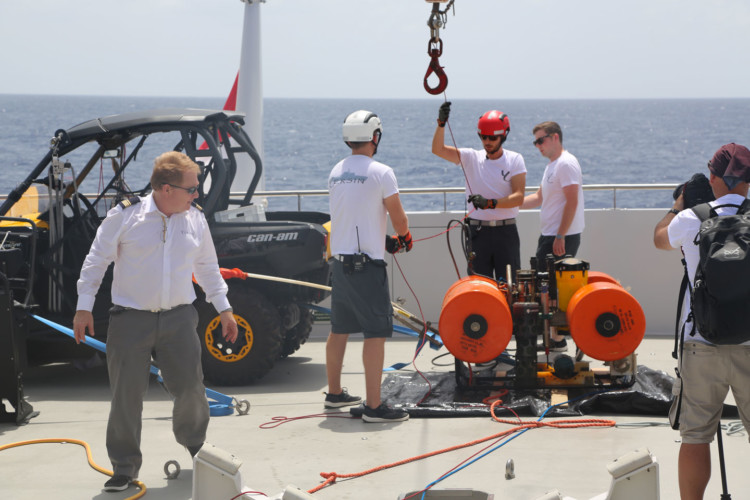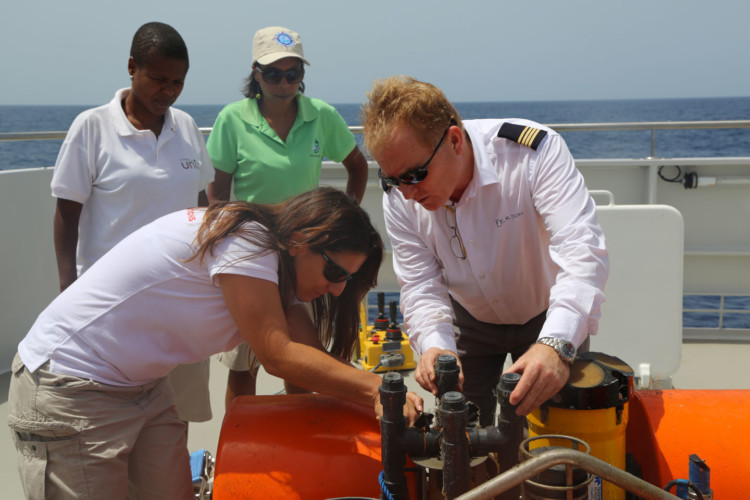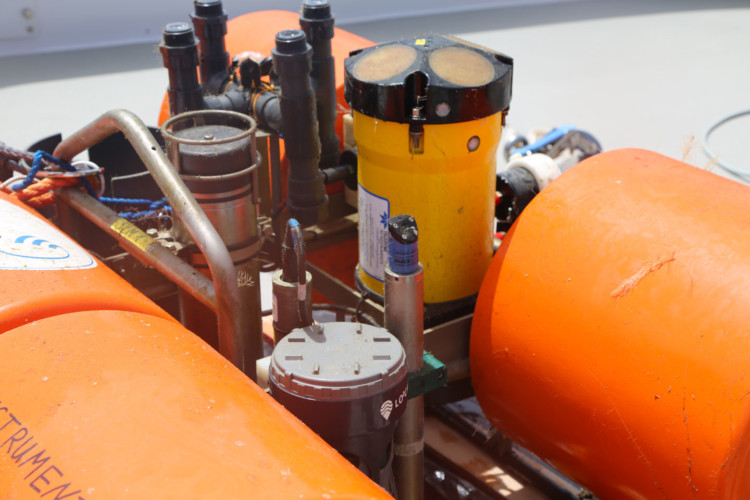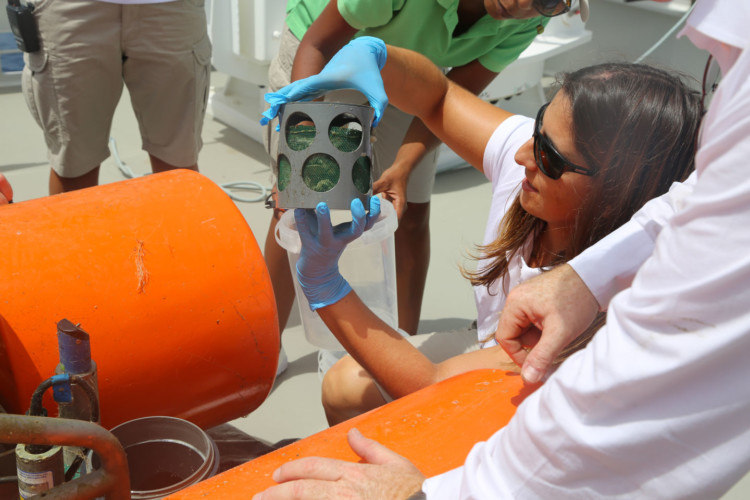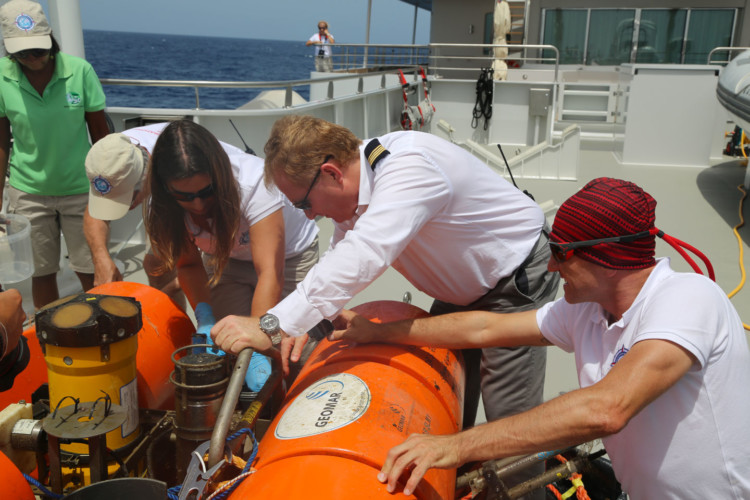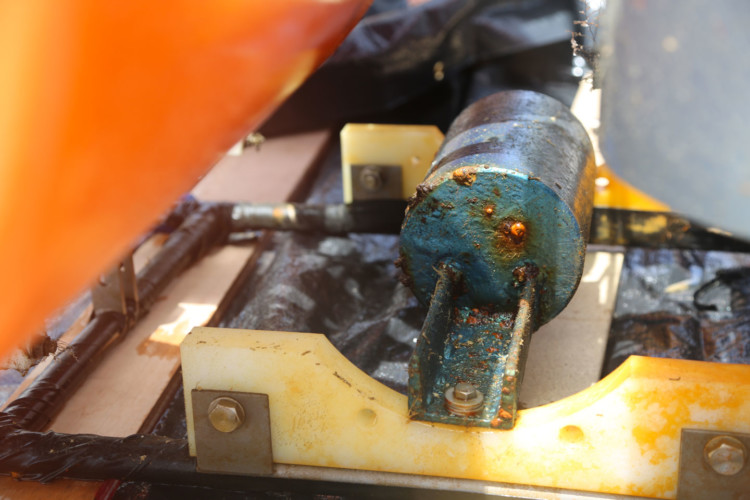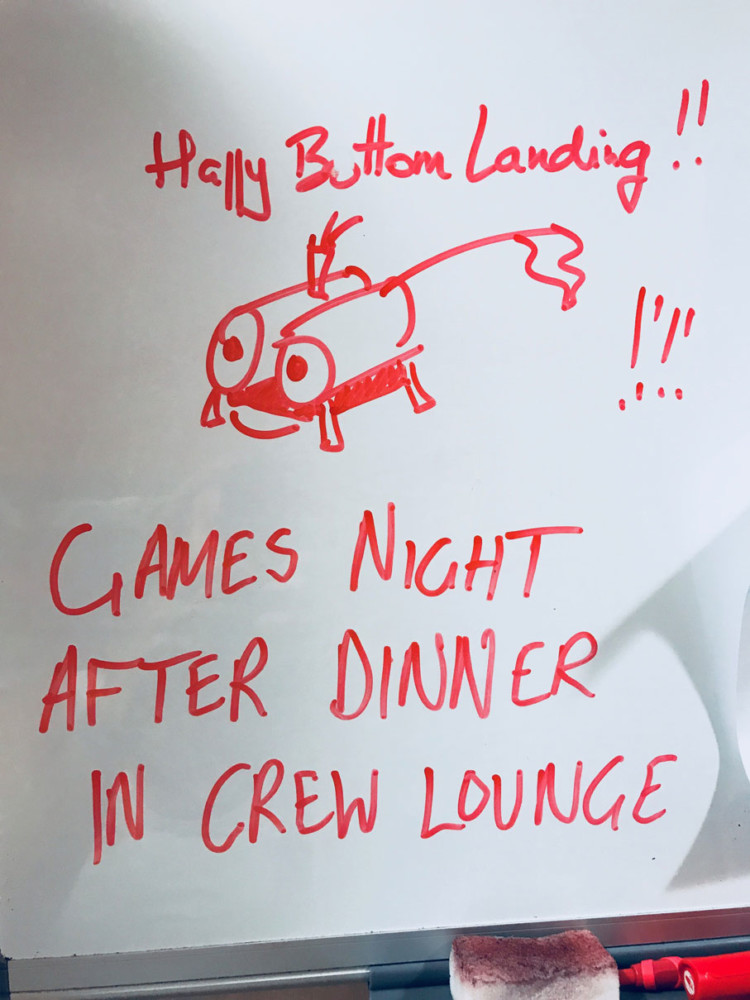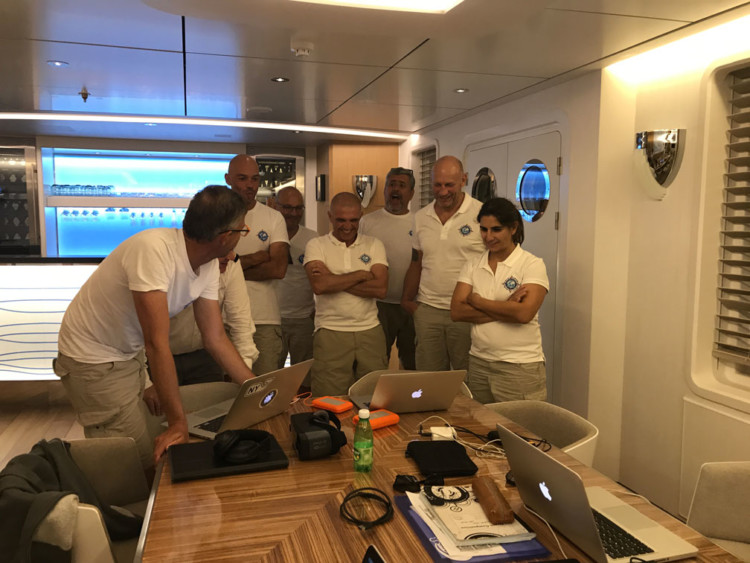Monaco Explorations partnered with MarAlliance, a group that monitors large marine wildlife to assess population status and the effectiveness of marine protected areas. Check out this clip to see the amazing work done with a baited camera on our mission in Cabo Verde.
Last Friday the GEOMAR Helmholtz ’s team went out to Santa Luzia in order to have a visual inspection of the bottom lander retrieved (see our post) and deployed (Santa Luzia) last September.
« Peri and Dario went diving and they did a really great job… » said Björn Fiedler (who is a bottom lander specialist and currently on a six-month research stay in Mindelo) « …They know that area quite well and the exact time to enter the water (depending on the tides and the current) ». The 2 divers did their inspection and removed the end caps of the trap as well as the painter lines.
« The lander is already quite a bit covered by biofouling… we intend to recover it on Nov 5th. » add Björn.
Looking forward to seeing the data from this deployment.
10 students and professors (biologists, naval designer, engineers, etc) from Cabo-Verde University including the President Antonio Varelo, visited the Yersin yesterday.
A 2.5 hours tour including a talk with the captain Jean Dumarais and the crew members, the discover of the laboratories, the engine room, decks and bridge and the equipments (tenders barge ROV). Before leaving our guests have been given a presentation focused on the scientific work done in Cabo Verde by Monaco Explorations since over 3 weeks.
A Very important conclusion before leaving this beautiful country as the University has been a key partner of Monaco Explorations.
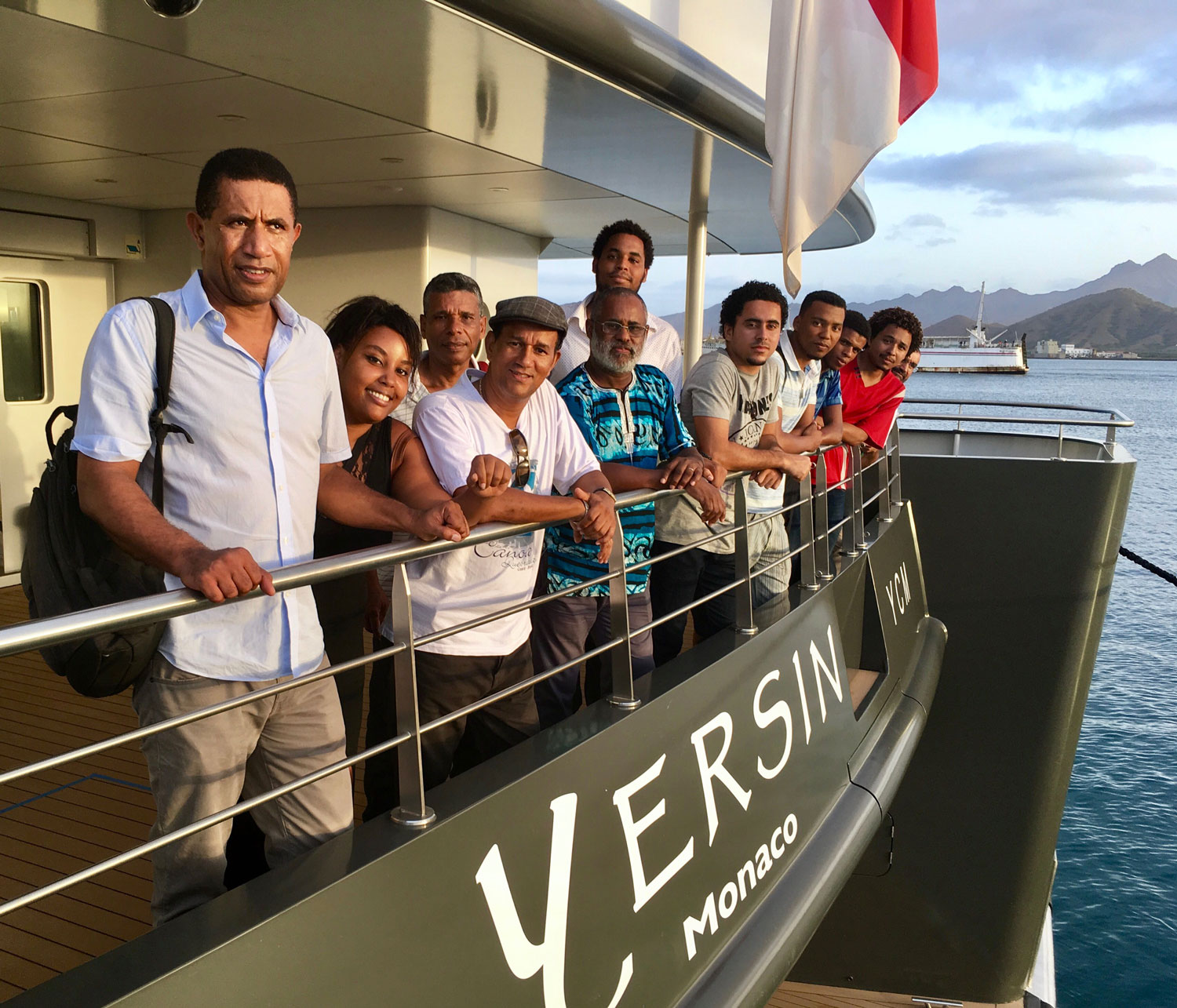
Monaco Explorations gave the opportunity to the MarAlliance’s team to spend a week at sea around Cabo-Verde.
We will have a look to this mission soon, but today let’s read about the importance of the logistic for such an expedition.
Read Exploration with Monaco in Cabo Verde (MarAlliance).
Photo © Rachel Graham / MarAlliance
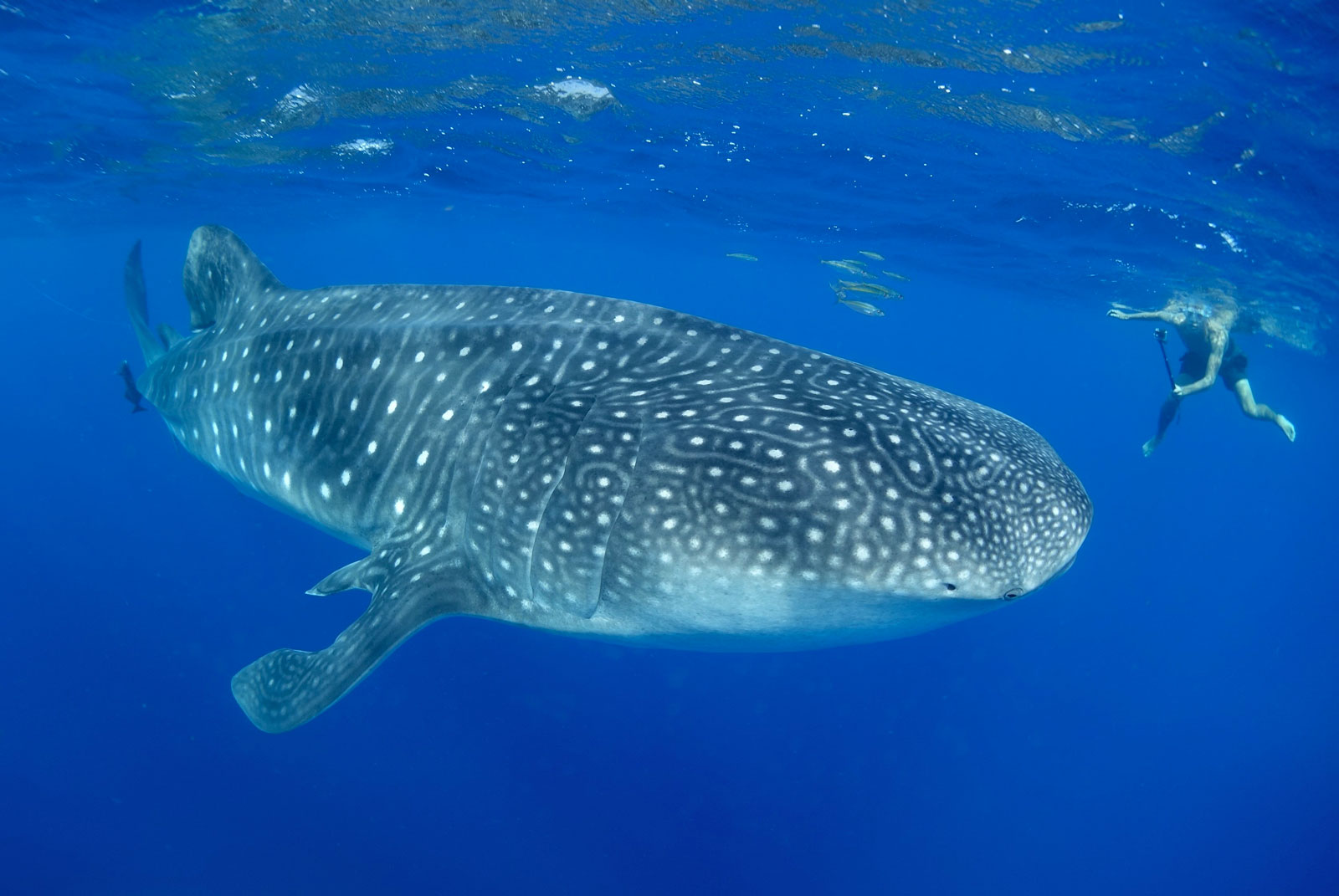
During 4 days In september a small team of 5 scientists and local fishermen has been left on Branco, a desert Island belonging to Cabo Verde archipelago.
Branco is known for its inhospitality (no shelter, wind, difficult slope, very rocky, jagged and mountainous) and its endemic reptiles (lizard and Gecko).
Since 10 years, Raquel Vasconcelos, from Porto University (Portugal) is one of the world specialist of this specific animals. She is tracking them gently under stone or with cameras.
Measurements, GPS’ tag and observation are helping to understand their live and interactions with sea birds.
She is also looking for the giant skink, a big lizard that nobody has seen since decades.
Photos © Monaco Explorations / Olivier Borde
During Prince Albert’s visit in Cabo Verde we christened the new GEOMAR Ocean Science Center Mindelo, Skyped with 300 schoolchildren in Monaco, visited the island of Branco to pick up Raquel and Aurélien and hear about their work looking for evidence of the giant skink, learned about the GEOMAR wave glider that is aboard the Yersin, and visited a sea turtle hatchery on the beaches of Boa Vista.
GEOMAR Ocean Science Center Mindelo
The GEOMAR Helmholtz Center for Ocean Research Kiel and the National Cabo Verdean Fisheries Research Institute INDP generously hosted an event to welcome HSH Prince Albert II to Cabo Verde with a first opening of their Ocean Science Center Mindelo (officially opening in late 2017).
The event was attended by nearly 200 people who heard speeches from:
- HSH Prince Albert II of Monaco
- Robert Calcagno, Director of the Oceanographic Museum of Monaco
- Carlos Évora, Director Nacional de Economia Marítima of the Republic of Cabo Verde
- Dr. Astrigilda Silveira, Vice-Rector of Universidade de Cabo Verde
- Dr. Osvaldina Silva, President of the Instituto Nacional de Desenvolvimento das Pescas (National Institute for Fisheries Development)
- Dr. Peter Herzig, Director of GEOMAR
- Dr. Björn Fiedler, Chief Scientist at GEOMAR
Read more about the creation of the Ocean Science Center Mindelo here event here, and watch the live broadcast on the GEOMAR Facebook Page.
Scinque Géant Returned to Cabo Verde
HSH Prince Albert II (with help from our partners at the Oceanographic Museum of Monaco and Head of Missions Robert Calcagno) returned to Cabo Verde for research purposes one of the giant skink specimens collected in the early 1900’s by Prince Albert 1st, which has been housed at the museum.
President of Cabo Verde, Jorge Carlos Fonseca, hosted Prince Albert II for this symbolic ceremony of collaboration between Monaco and Cabo Verde.
[vc_row][vc_column][gem_video video_src=”https://www.monacoexplorations.org/videos/TraditionalDance.m4v” image_src=”27327″][vc_column_text]
HSH Prince Albert II and Robert Calcagno Skype with 300 Schoolchildren in Monaco
Educating and involving youth in Monaco Explorations is one of the main goals of this campaign. There is no better place to start than at home. We were happy to facilitate a “virtual field trip” to Cabo Verde’s Ocean Science Center Mindelo via Skype for more than 300 schoolchildren at the Oceanographic Museum of Monaco. The children prepared questions for HSH Prince Albert II and Museum Director, Robert Calcagno.
You can watch the Skype session from the Museum’s Facebook Page.
Questions from the kids:
- Is your family with you on the boat?
- Do you miss them?
- When are you going to come back to Monaco?
- The monk seals could disappear. How are you going to save them?
- What can we do to help save the oceans?
- The expedition is 3 years! Will the crew on the boat be able to see their families?
[/vc_column_text][/vc_column][vc_column][/vc_column][vc_column][/vc_column][vc_column][/vc_column][/vc_row]
This post is continued from Part One
During Prince Albert’s visit in Cabo Verde we christened the new GEOMAR Ocean Science Center Mindelo, Skyped with 300 schoolchildren in Monaco, visited the island of Branco to pick up Raquel and Aurélien and hear about their work looking for evidence of the giant skink, learned about the GEOMAR wave glider that is aboard the Yersin, and visited a sea turtle hatchery on the beaches of Boa Vista.
Back to Branco
In a recent blog post, we explained that scientists Raquel Vasconcelos and Aurélien Miralles were camping on the island of Branco to collect samples and search for evidence of the presumed extinct giant skink. Today their work is complete and HSH Prince Albert II makes the trip to Branco to join them for a few hours and learn about their time there, and find out first hand what, if anything, they have discovered about the giant skink.
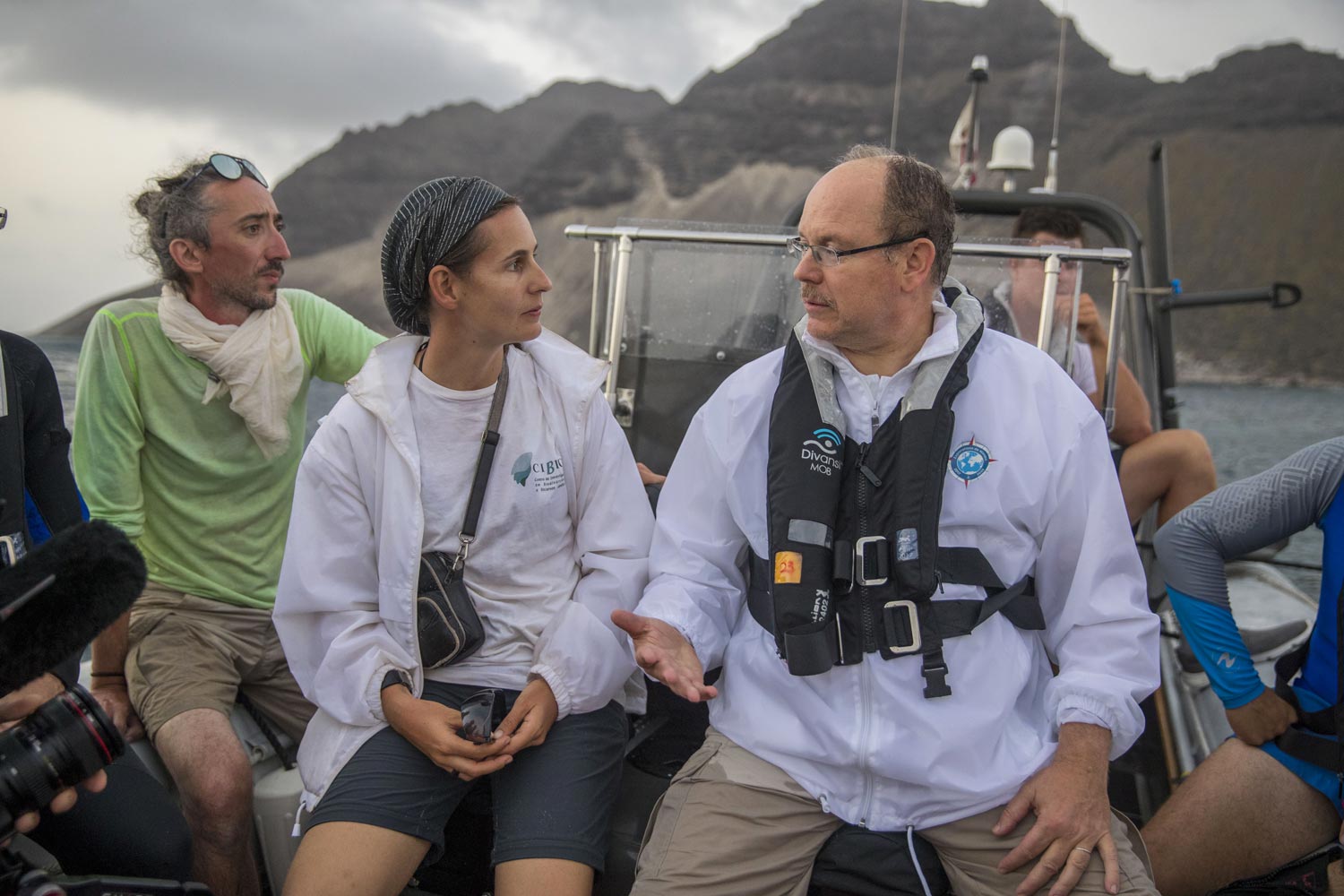
GEOMAR Wave Glider
Dr. Björn Fiedler of GEOMAR talked with HSH Prince Albert II to explain the purpose and capabilities of the wave glider and bottom lander, both of which were deployed from the Yersin.
“Jointly with Monaco Explorations we will launch state-of-the-art measuring platforms such as lander and wave glider to collect physical, chemical and biological data which are important for future marine protected areas” said Dr. Björn Fiedler from GEOMAR.
Sea Turtle Hatchery
Sea turtles have been on this planet since the dinosaur ages and are disappearing all around the world, becoming an endangered species in just the last 200 years. Sea turtles play a vital role in marine ecosystems. You can read more about Why Healthy Oceans Need Sea Turtles here.
The Turtle Foundation, Project Cabo Verde invited Monaco Explorations to Porto Ferreira beach on Boa Vista Island so that we could learn about their work and gain a better understanding of the importance of sea turtle preservation in the larger scope of ocean conservation. Prince Albert II visited the hatchery and talked with the scientists who are stationed there and he gave children’s books, depicting the threats that sea turtles face, to the kids who were participating in a day camp with the Turtle Foundation.
[vc_row][vc_column][gem_video video_src=”https://www.monacoexplorations.org/videos/Hatcherywelcome.m4v” image_src=”27292″][vc_column_text]
During Monaco Explorations visit to the hatchery a few days before HSH Prince Albert arrived, we were very lucky to have been invited to witness a turtle laying her eggs at night. (These photos are courtesy of Head of Mission, Pierre Gilles)
[/vc_column_text][/vc_column][vc_column][/vc_column][/vc_row]
During his trip to Cabo Verde with Monaco Explorations, HSH Prince Albert II of Monaco came to Mindelo to the new Ocean Science Centre of the GEOMAR Helmholtz Center for Ocean Research (Germany).
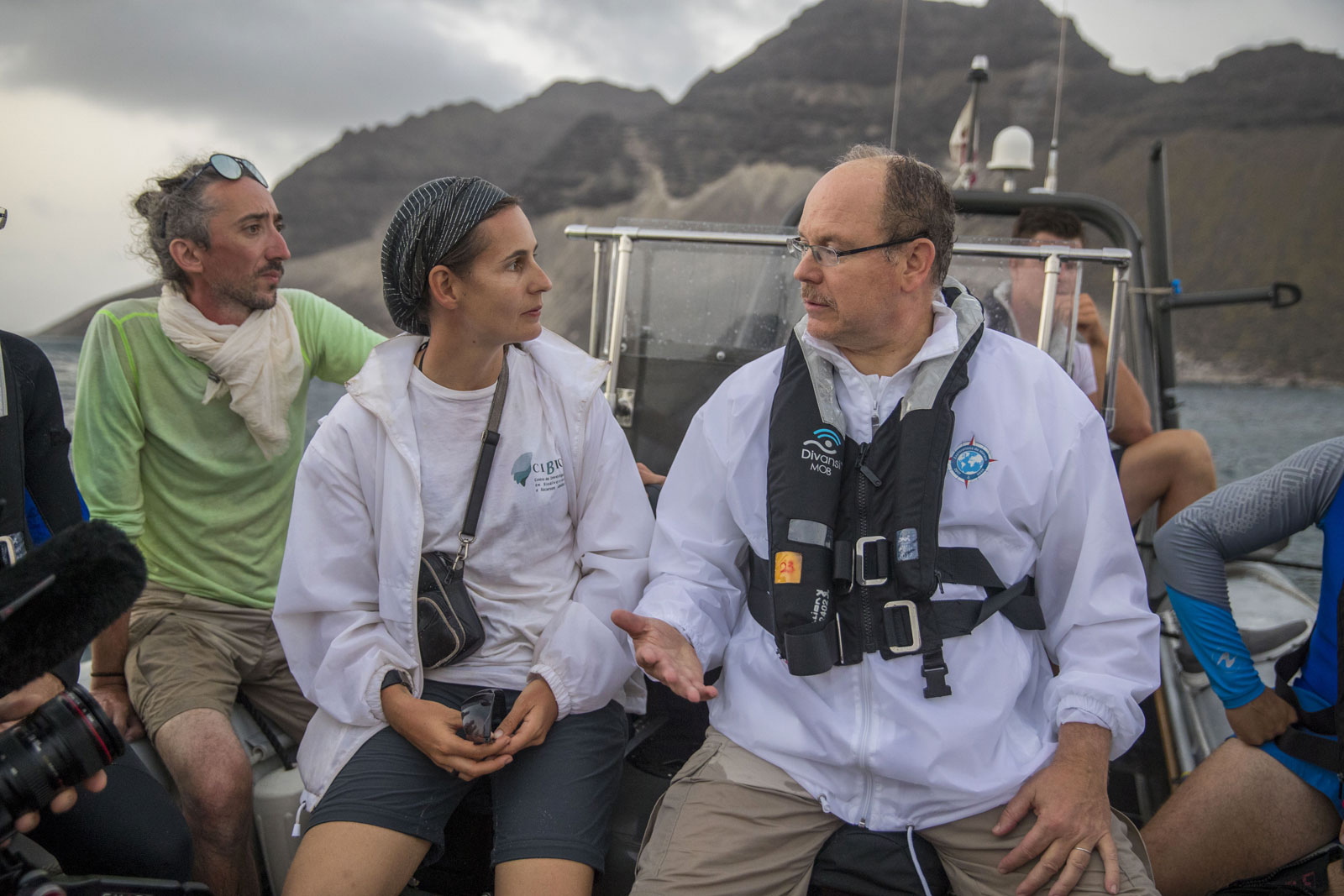
In June, scientists Raquel Vasconcelos from CIBIO-InBIO and Aurélien Miralles from the National Museum of Natural History in Paris came to the Oceanographic Museum of Monaco to examine Scinque Géant specimens brought to Monaco from the island of Branco in the Cap Verde archipelago in the early 1900’s by Prince Albert the 1st. This lizard species is said to be extinct but during our time here in Cabo Verde, we hope to be able to find evidence of a live Scinque Géant.
The uninhabited island of Branco has a rough terrain, is very windy, and has only one tiny stretch of beach that disappears at high tide. Because it is a difficult island to get to, let alone spend any amount of time on, there is not much research done there. However, despite the less than ideal conditions, Raquel and Aurélien managed to camp on Branco for 3 nights to collect samples for their research, and looking for evidence of the Scinque Géant.
While we traveled to Branco, we prepared the camping materials in small drums to transport them, and worked with Yersin Captain Jean Dumarais to determine the best way to get ashore with as few people and trips back and forth with the tenders as possible. One of our biggest difficulties with the work Raquel and Aurélien will be doing is that the Yersin needs to travel away from Branco while they are camping. There is no cell service, so we have to leave a satellite phone and have them check in each hour to confirm safety.
We arrived near Branco late in the afternoon and had to work fast to get the team ashore and their camp set up before sundown. The Yersin anchored a few hundred meters off the coast. The tenders took us near the shore, and from the tenders we transferred everything to the small dinghy with the local fisherman to go to the beach. It took 4 trips in total, and on the second trip, a huge wave capsized the small dinghy throwing 5 people and all the equipment into the sea. Luckily we were ok, and recovered everything before the sea carried anything away. We worked quickly to set up camp and do a few interviews before leaving the small team to fend for themselves for a few days.
Branco was quite the adventure. Raquel and Aurélien were able to collect many useful samples, but found no evidence that the giant skink still exists.

We arrived in Mindelo, São Vicente, Cabo Verde on September 15th late morning. We had to go through customs and immigration in the port, which took us a couple of hours longer than expected. The plan is to finish up here and travel toward the Senghor Seamount, arriving tomorrow, September 16th mid day. Here are a few shots from the Yersin in Mindelo as we waited on the customs process.
Retrieving the Bottom Lander
While in Cabo Verde we are working together with GEOMAR Helmholtz – one of the world’s leading institutes in marine science. We have Björn Fiedler onboard the Yersin. He is leading the mission today at the Senghor Sea Mount, which is located northeast of the islands of Boa Vista and Sal. GEOMAR deployed a bottom lander at the seamount nearly 8 months ago. It has been collecting data there and today we hope to retrieve it by sending a GPS ping that releases the anchor and allows the lander to surface.
Björn and his colleagues tell us that sending the ping does not always work, as the device has been on the seafloor for so long, sometimes it takes a couple of days to retrieve it due to any number of unforeseen circumstances. However, we only have a few hours, so this is a bit stressful because this is our one chance, and we will be disappointed to come all the way here and not be able to bring the bottom lander onboard.
Not only do we need the lander’s anchor to release and allow it to surface, we need to gently tow it through rough water to the side of the Yersin, then to be able to use our crane to bring it on the Yersin. This is very tricky because it is a large and heavy piece of equipment and today is windy, so it is quite dangerous.
We had great success, and I think the pictures tell the story well. More about GEOMAR and the specifics of the bottom lander, and their wave glider , in a future post.
